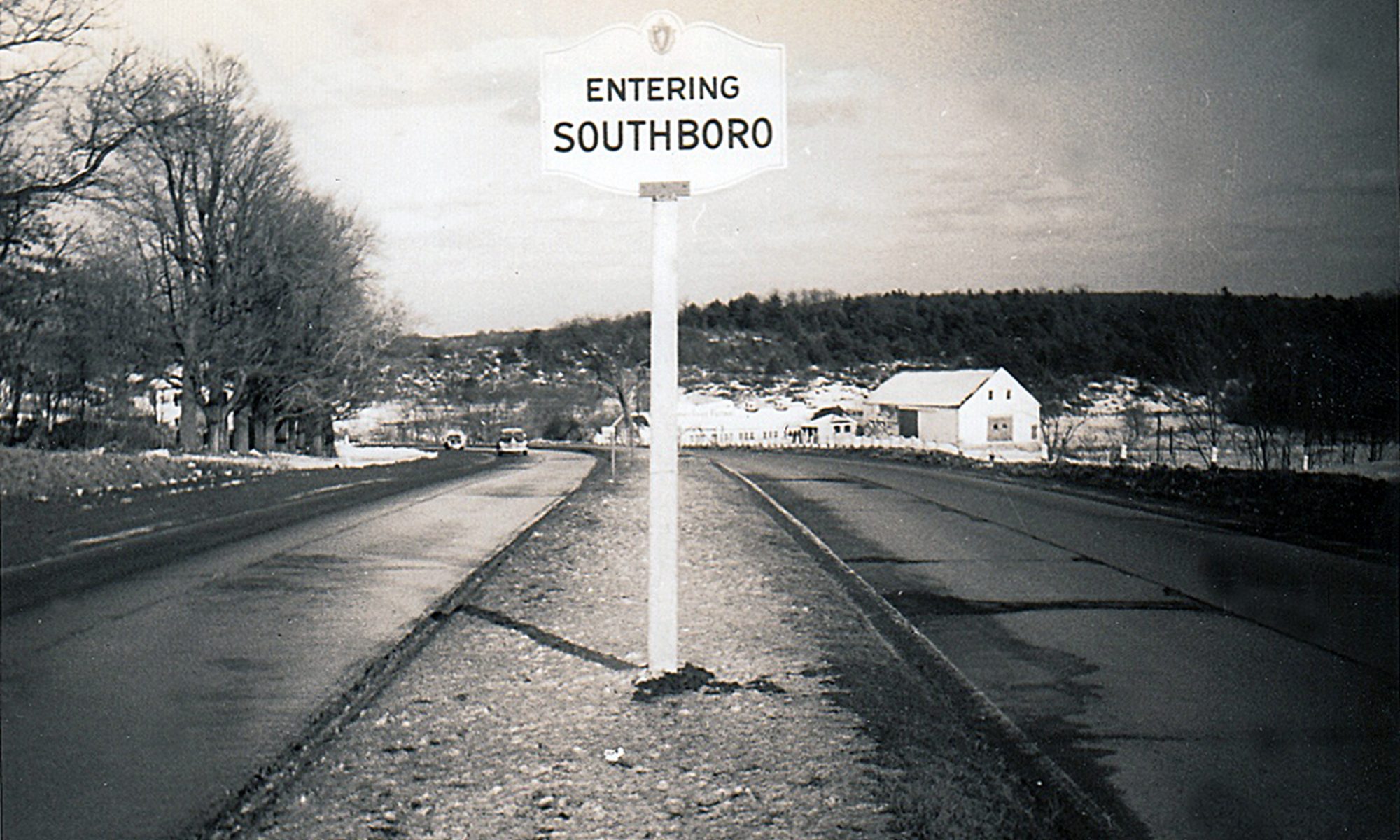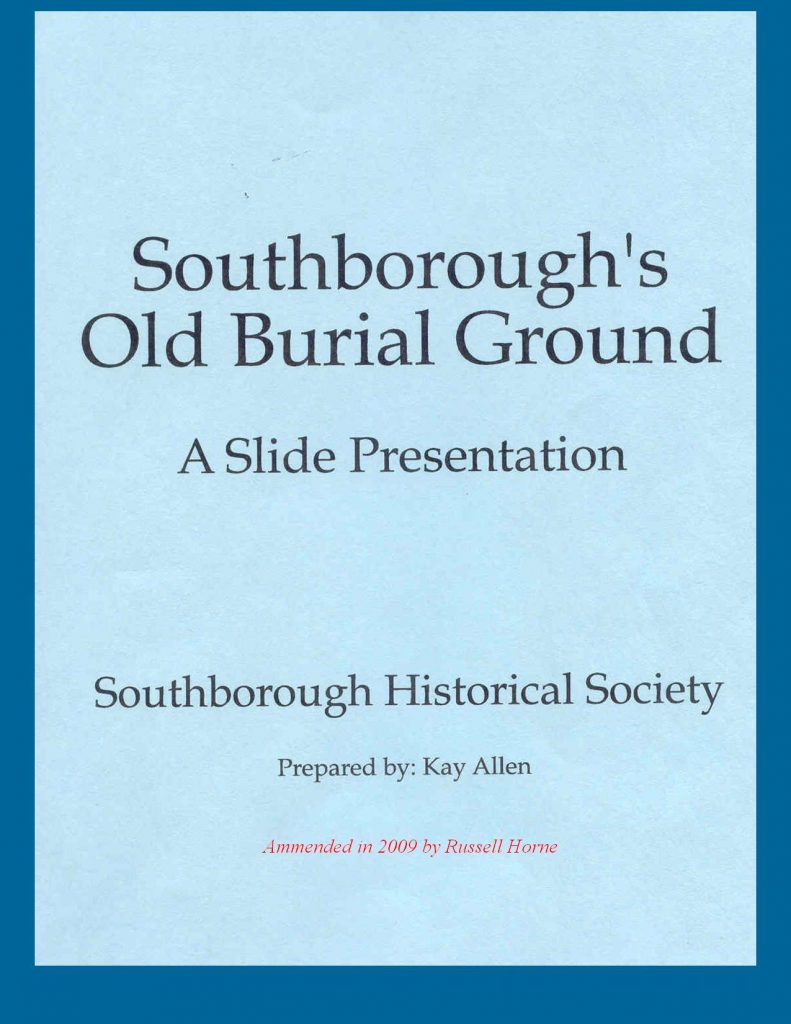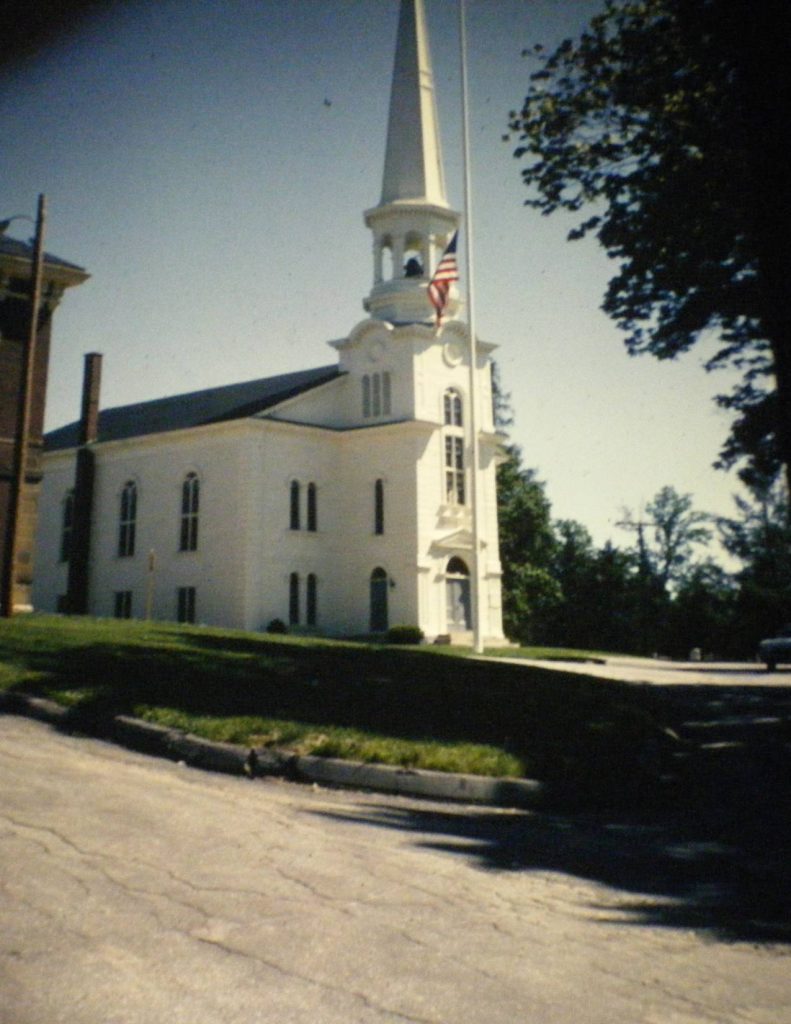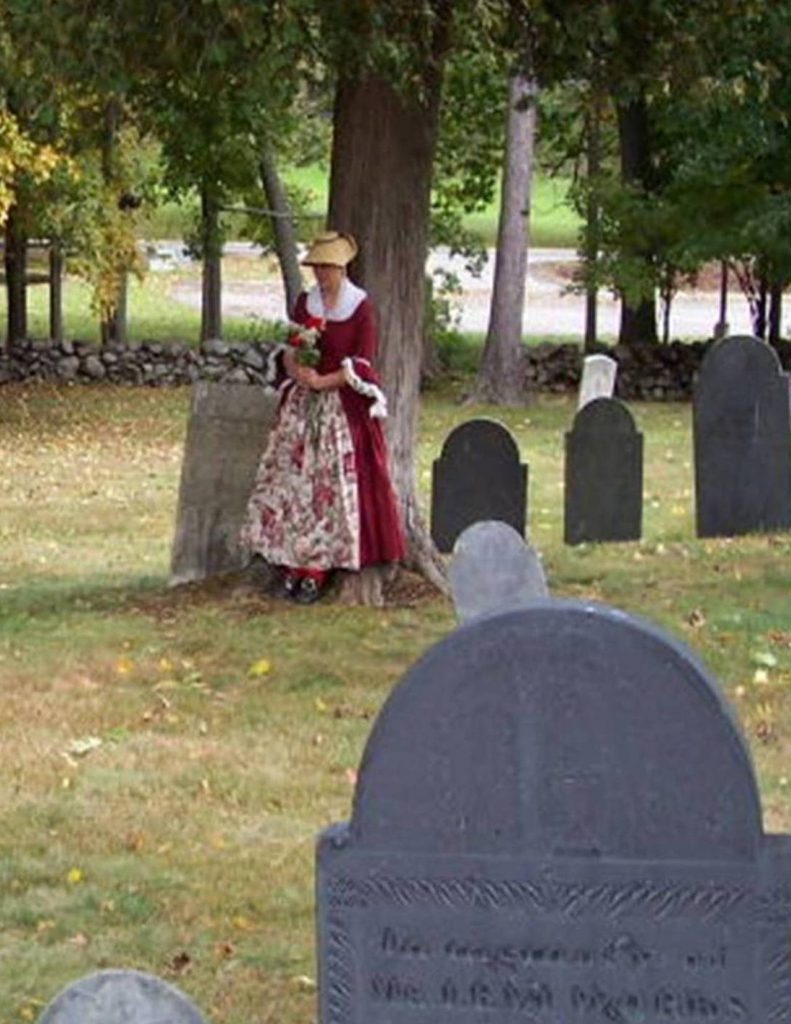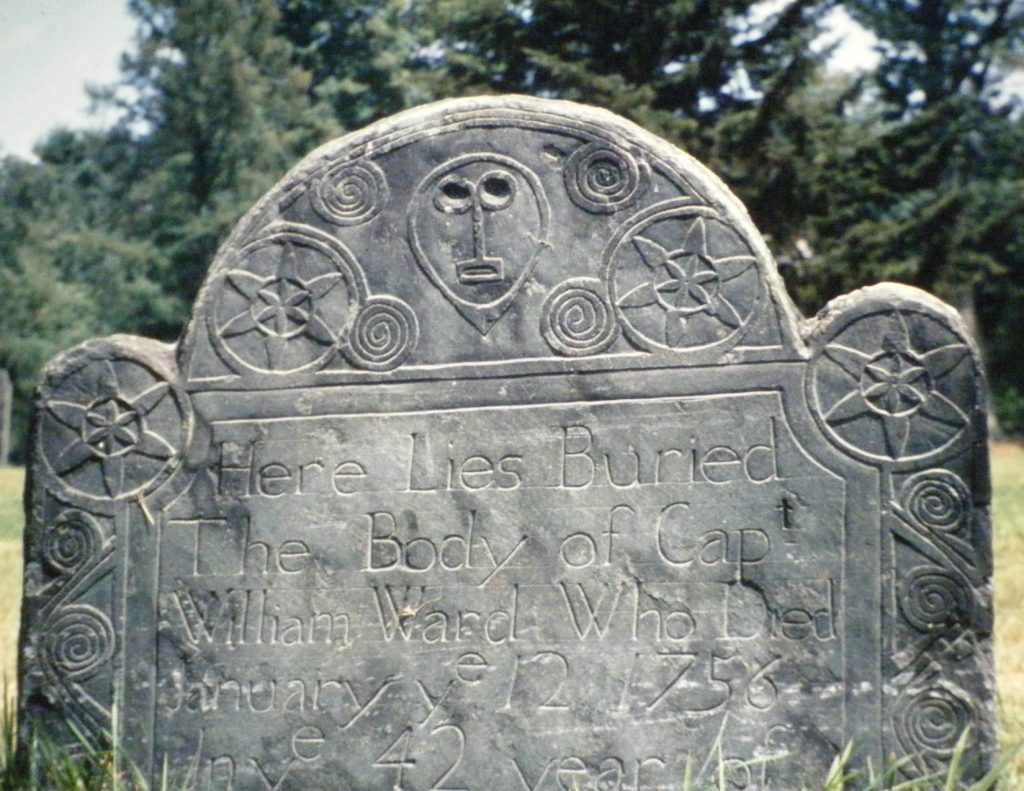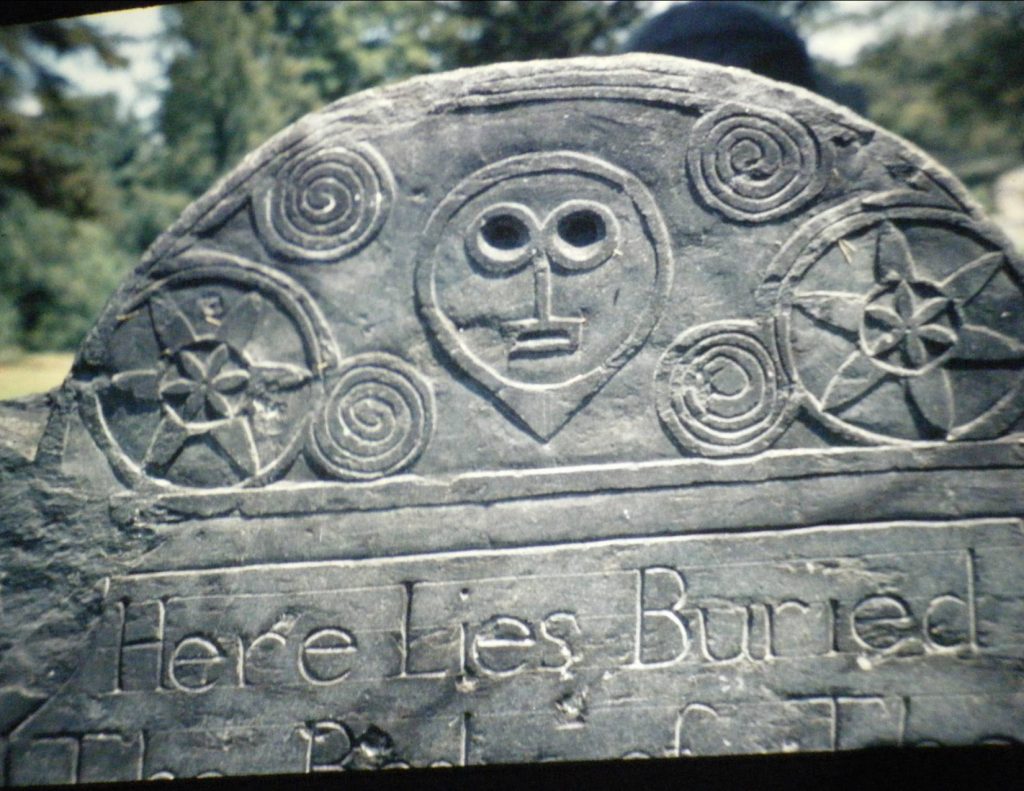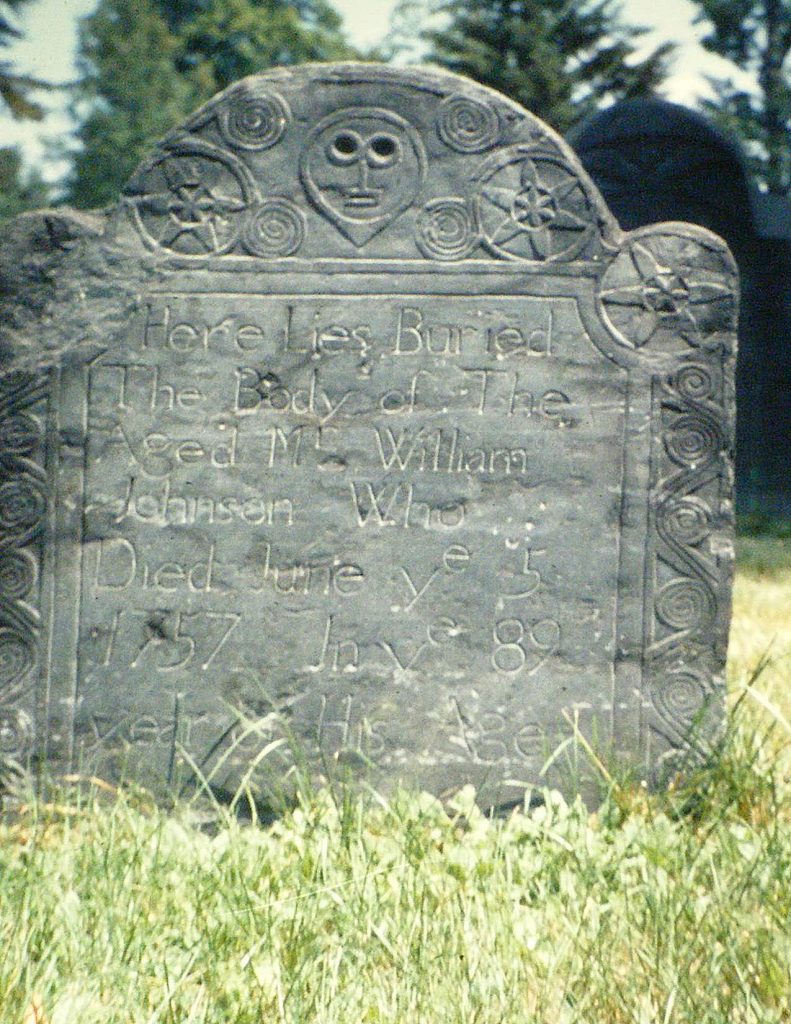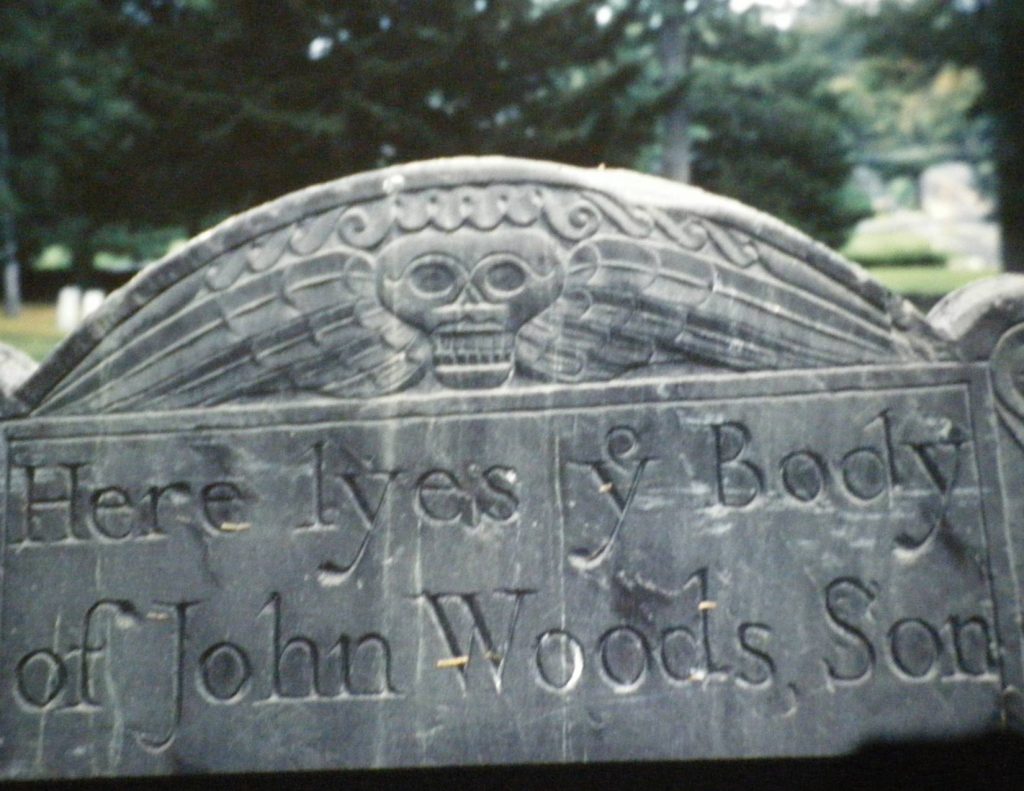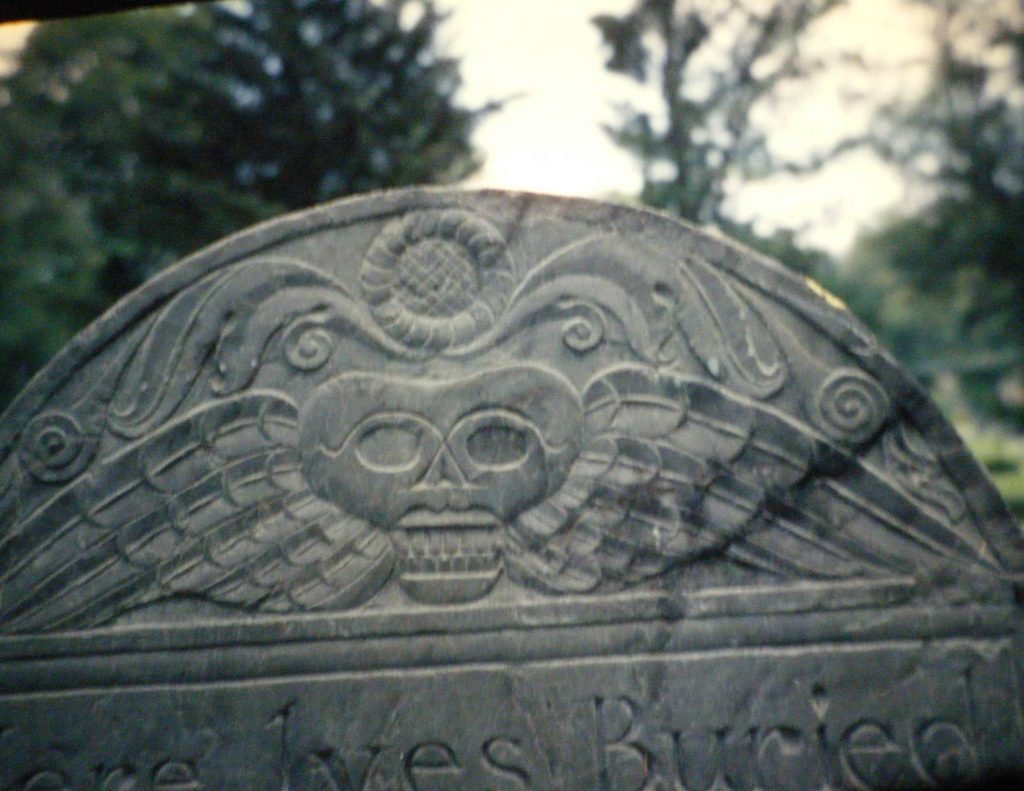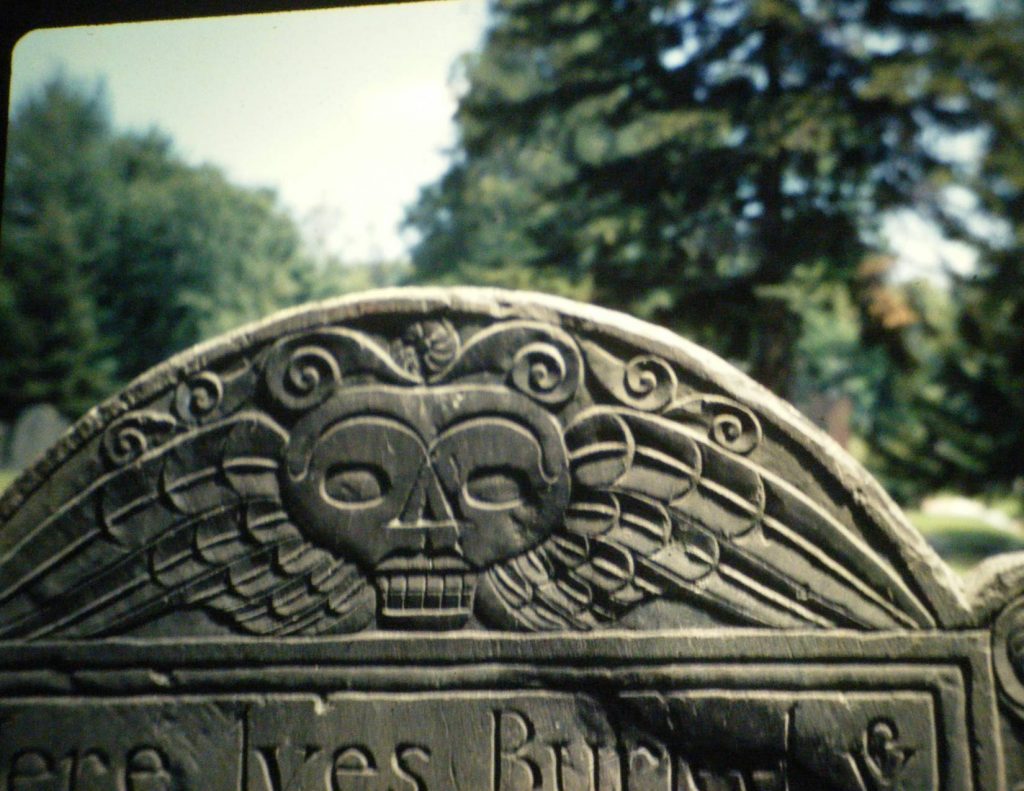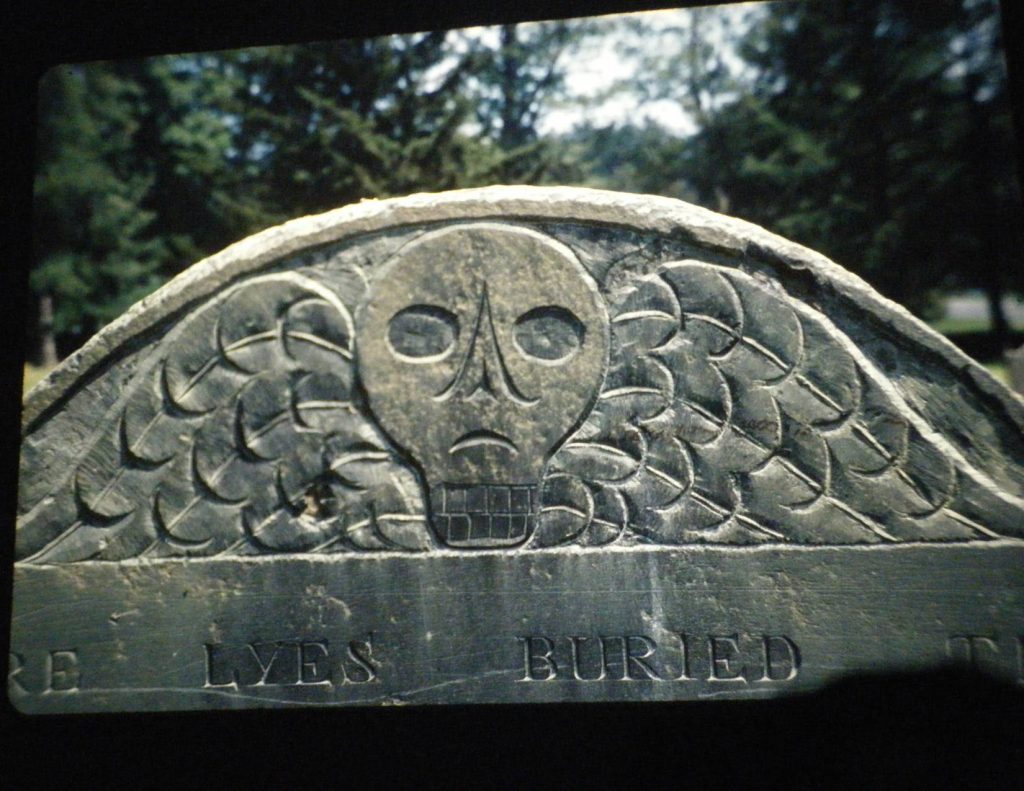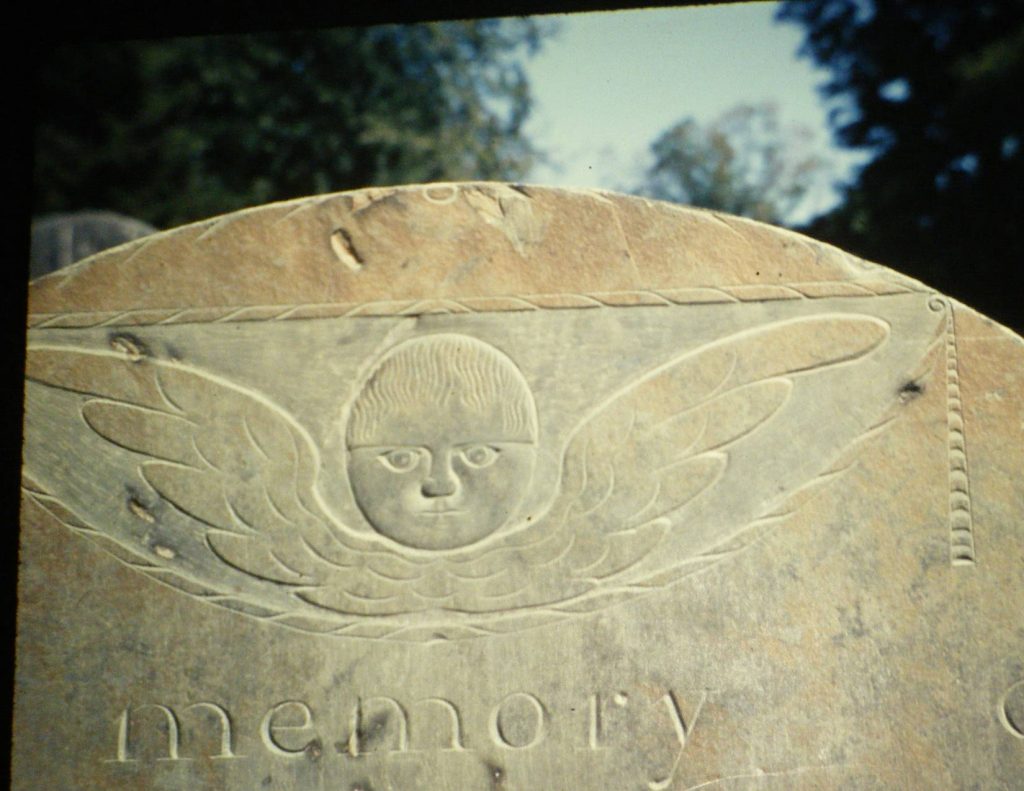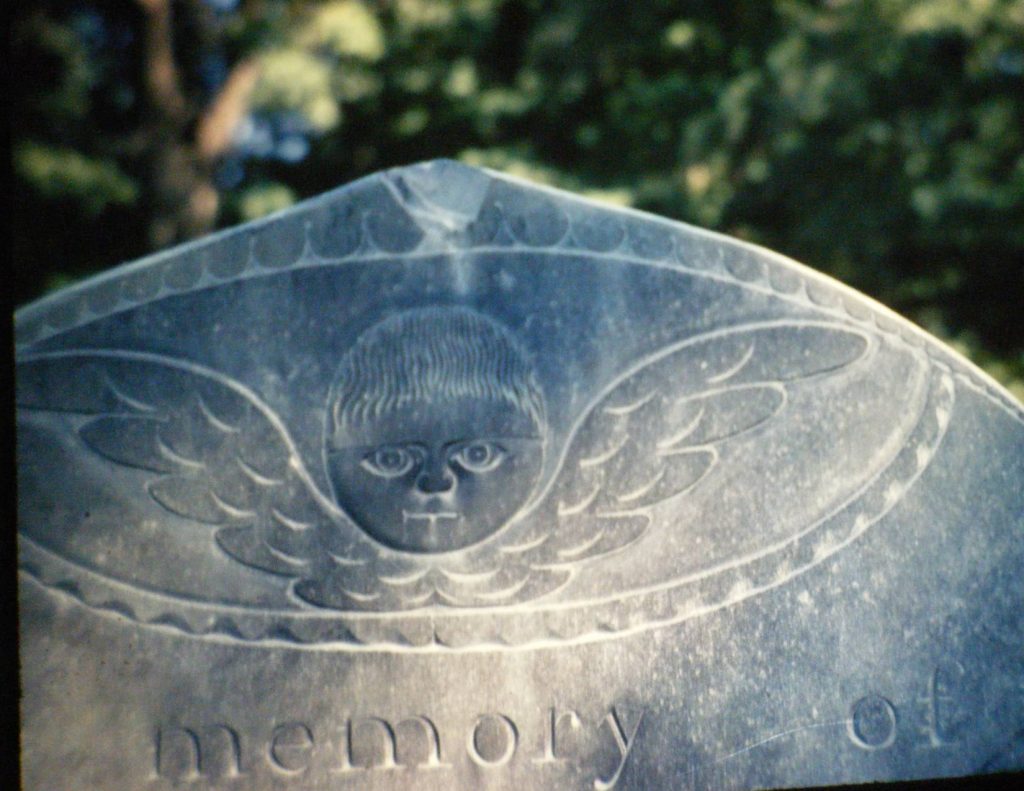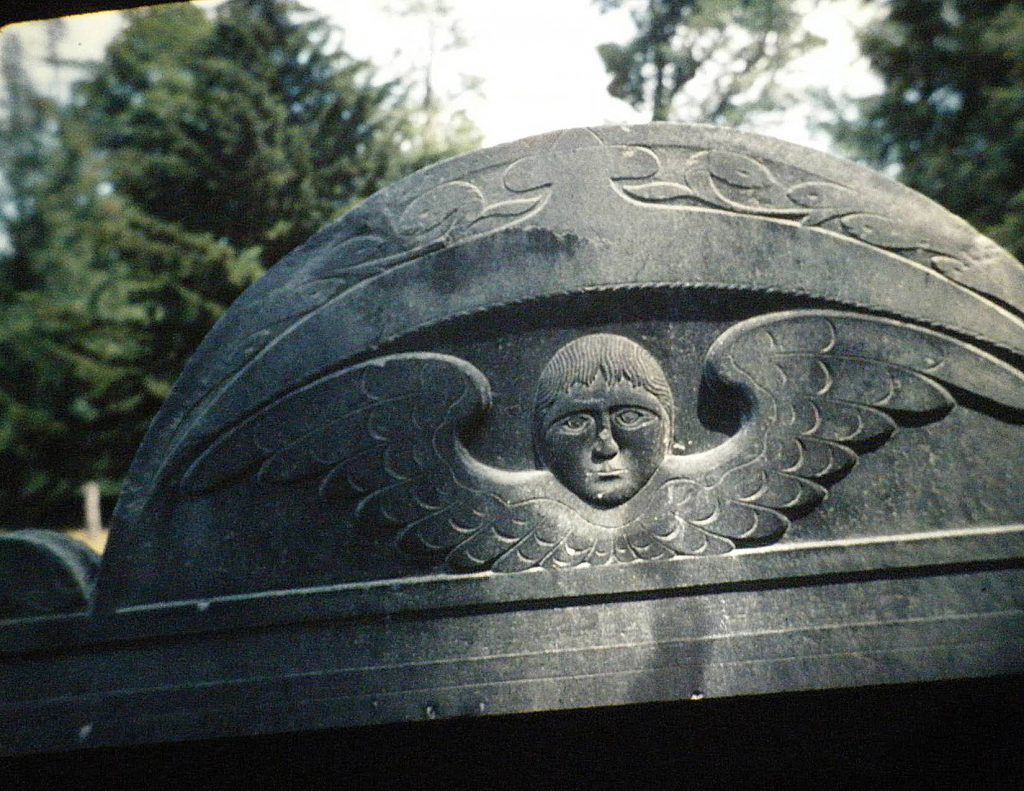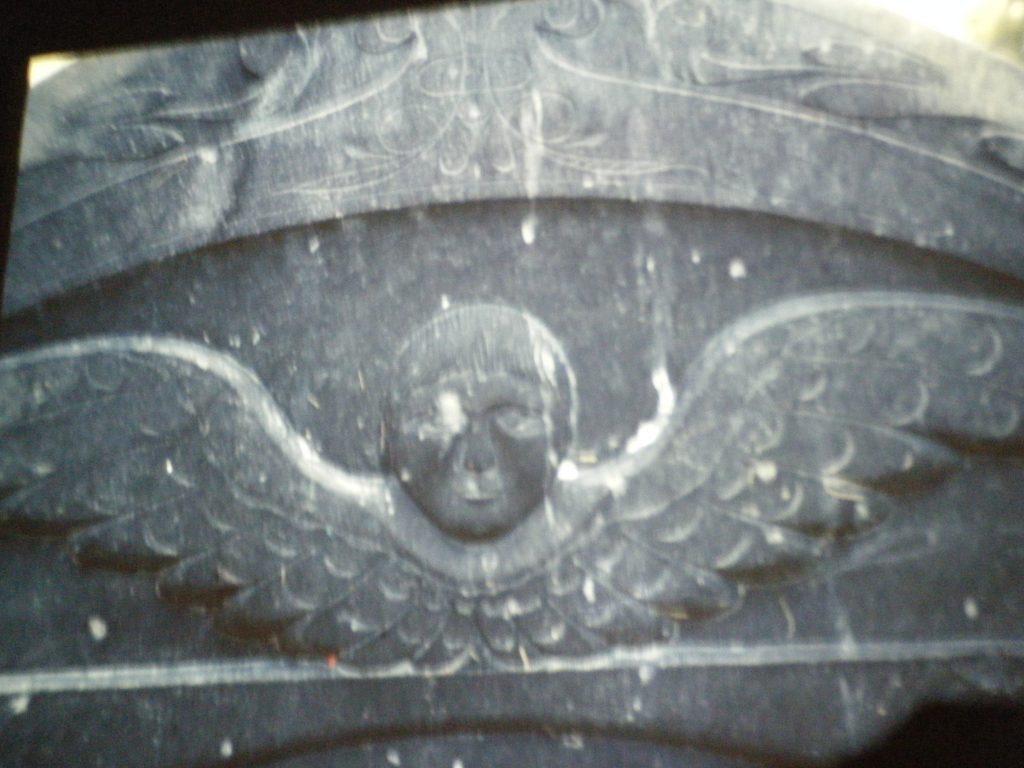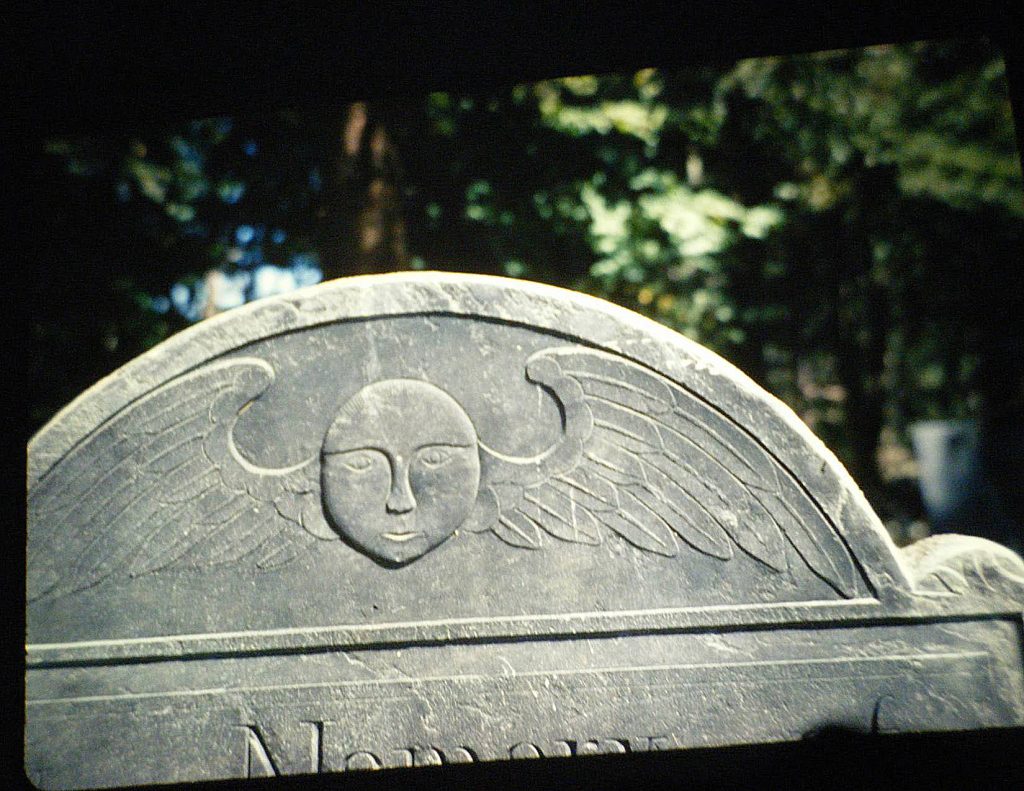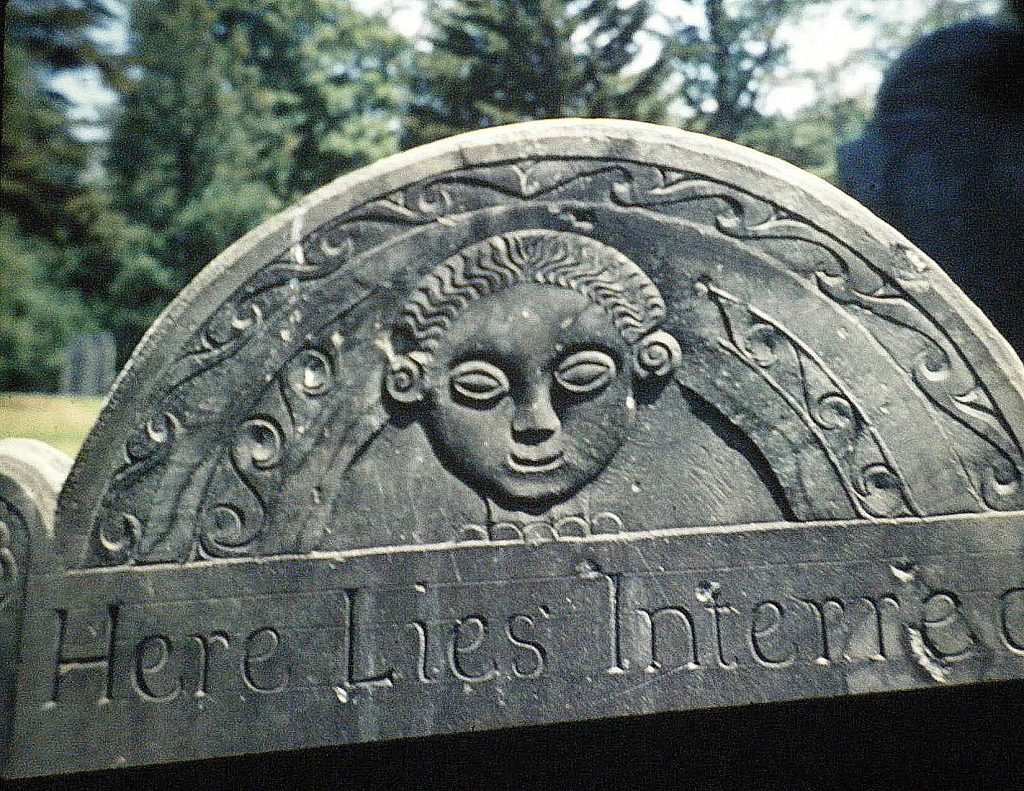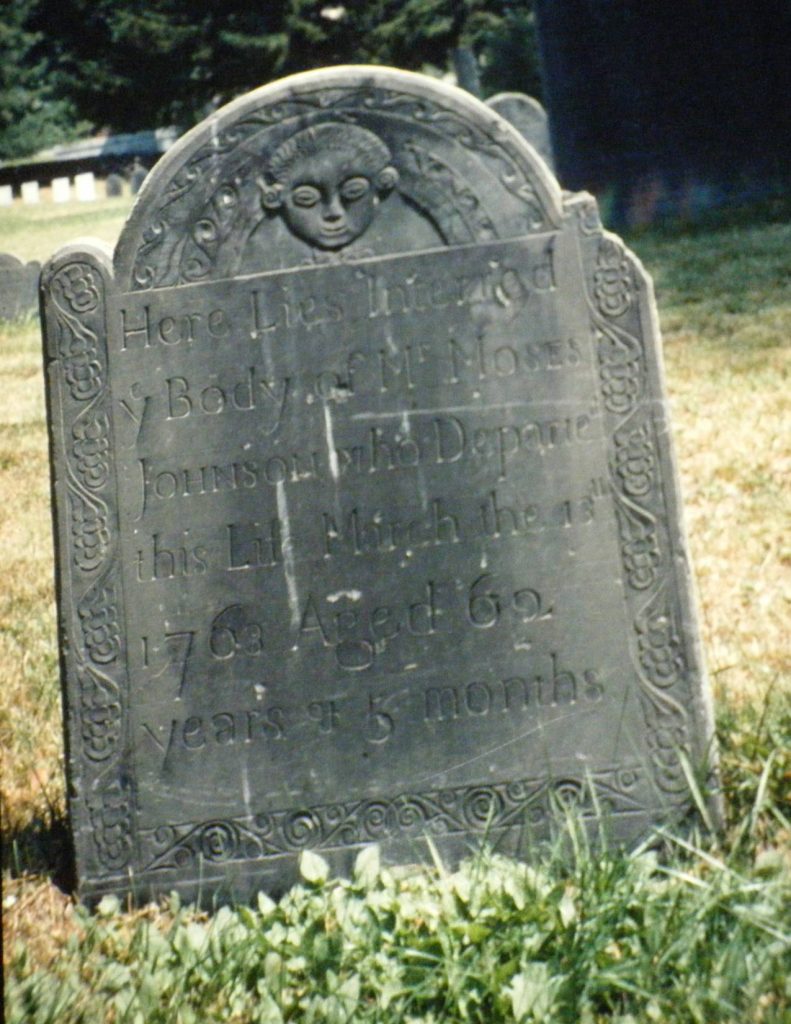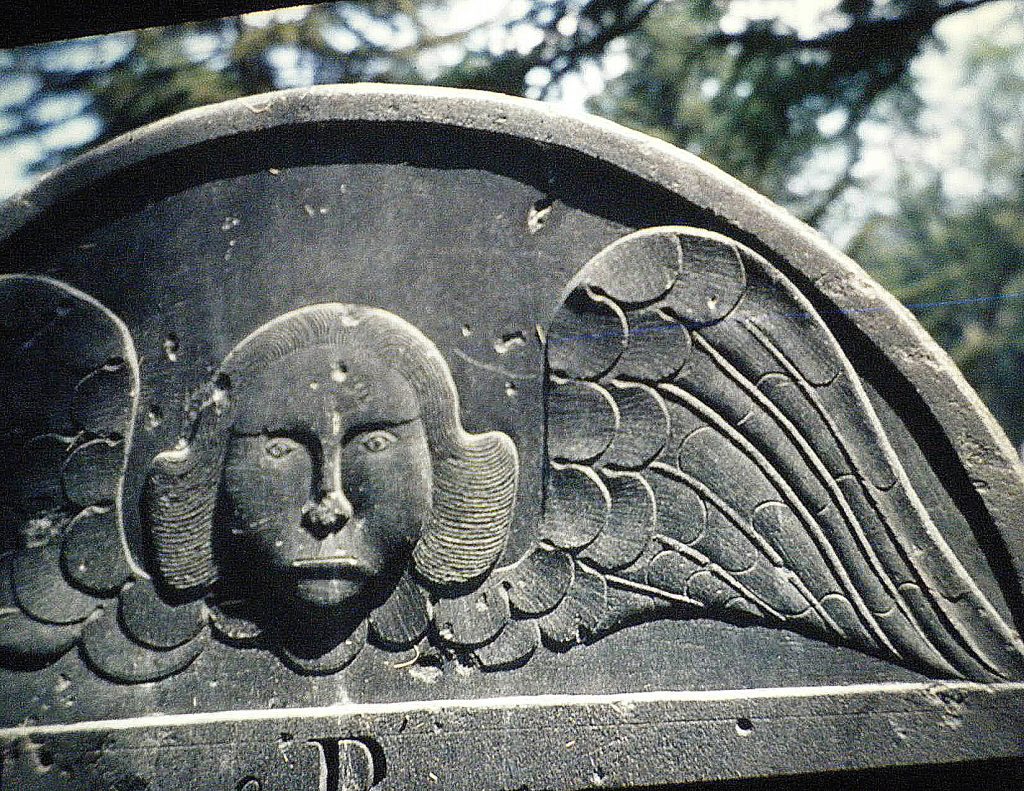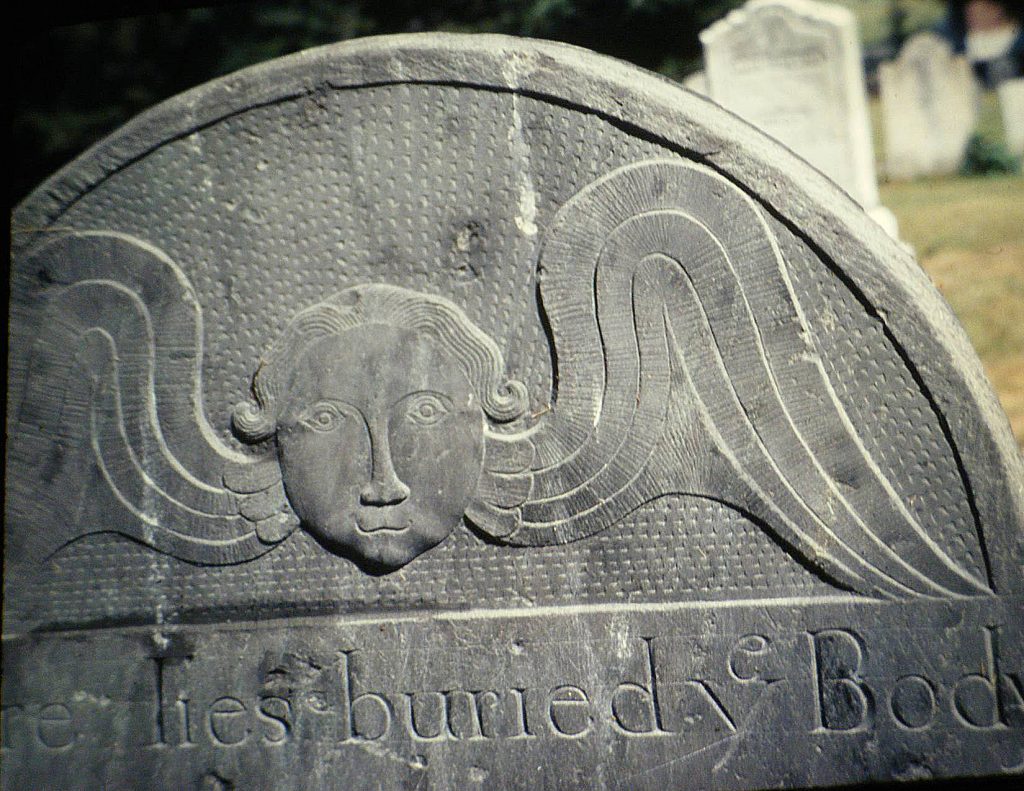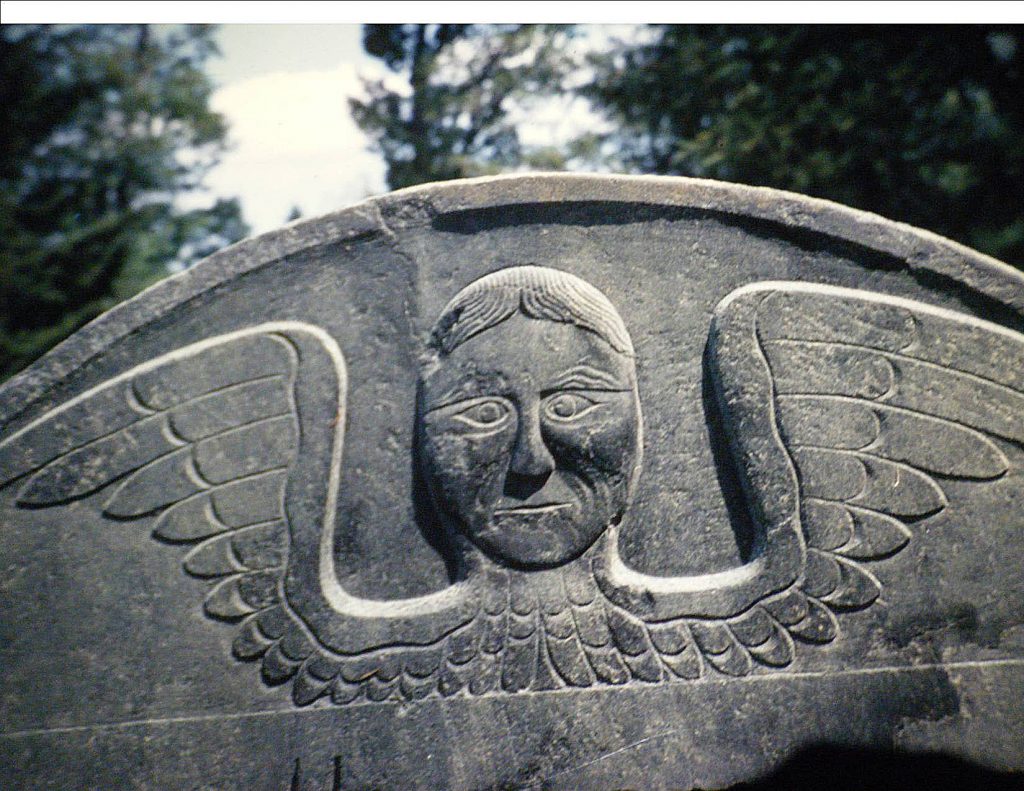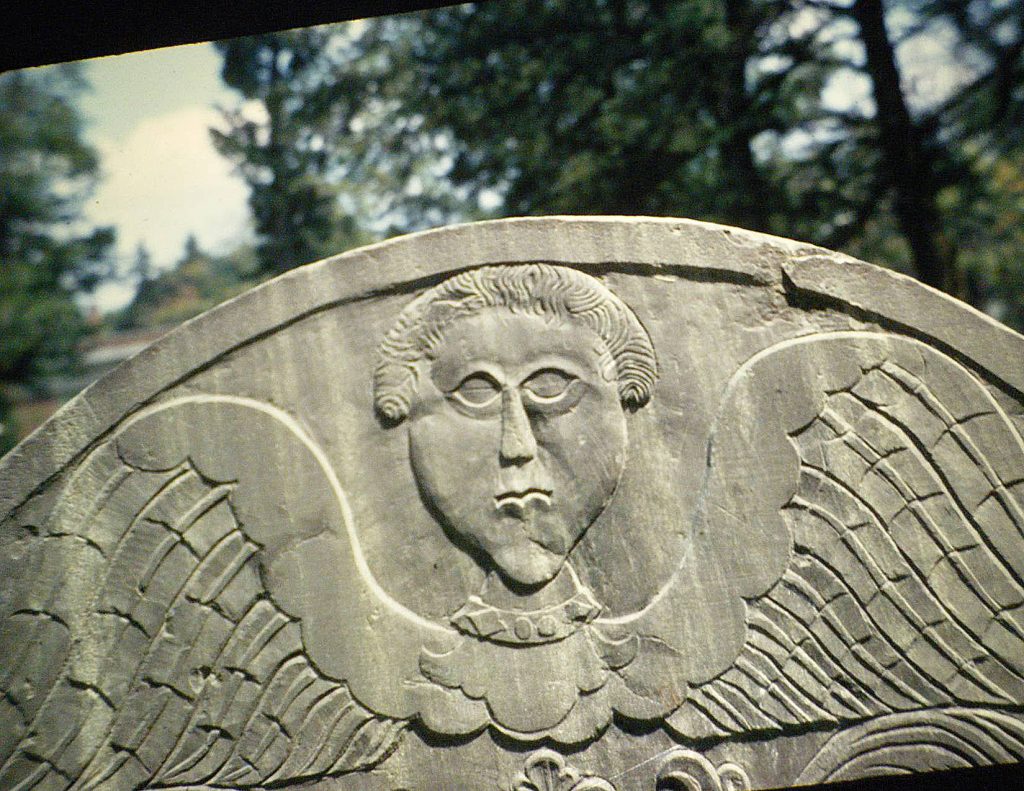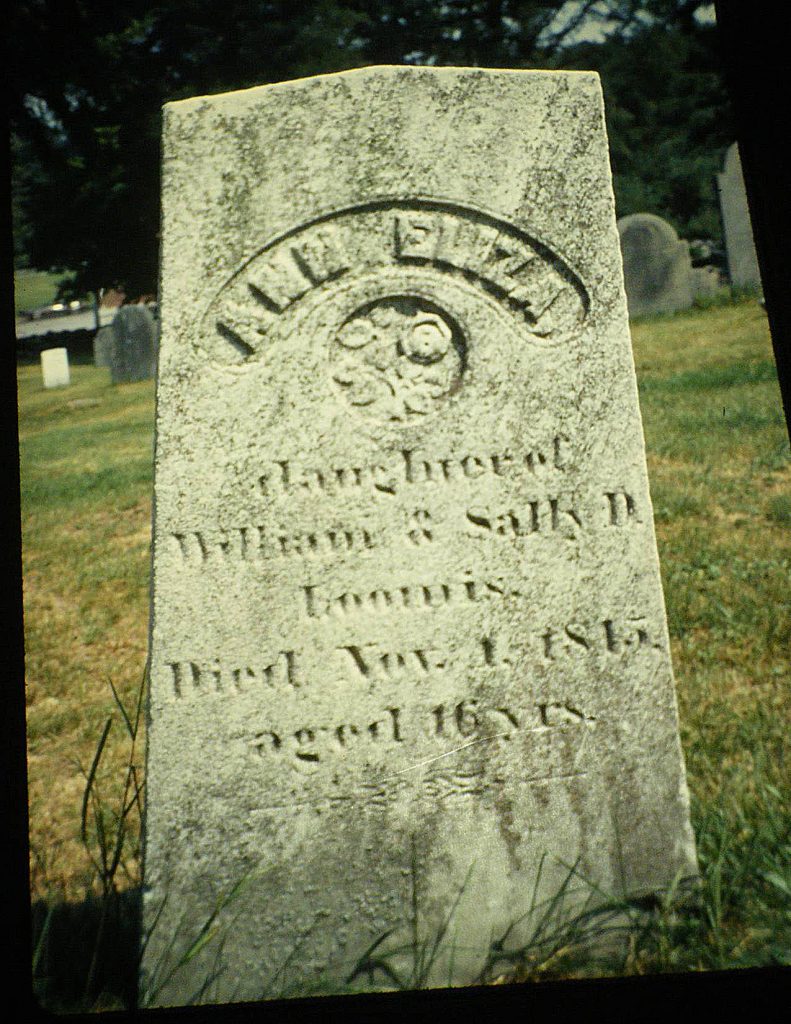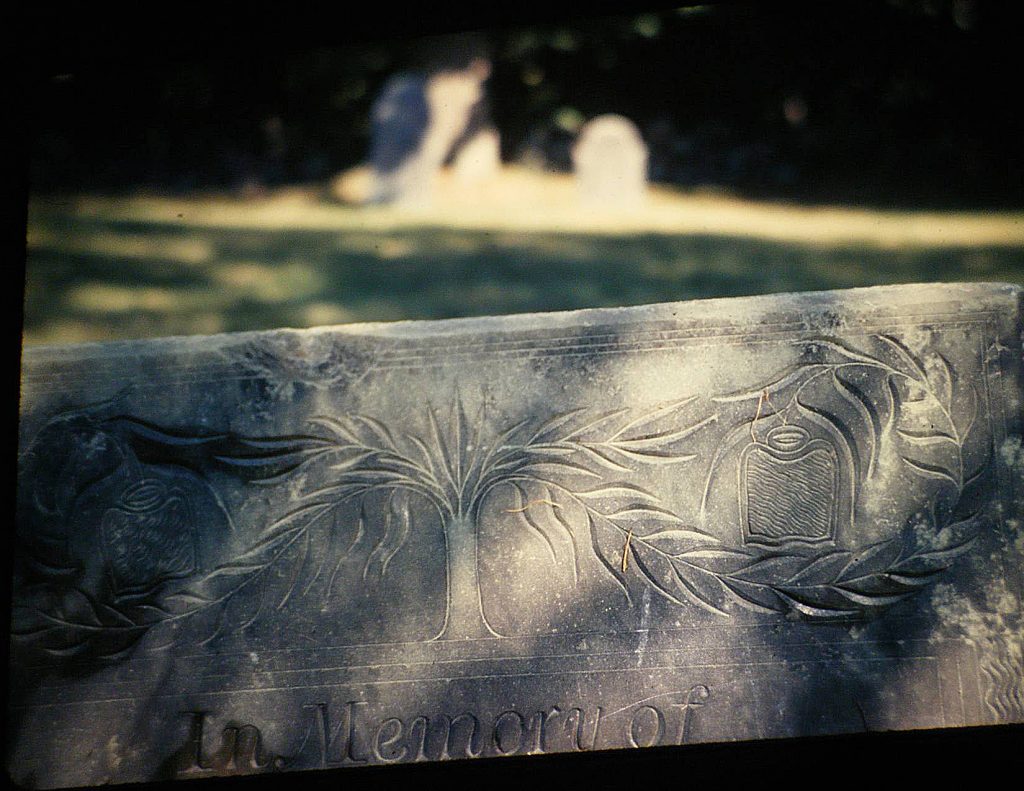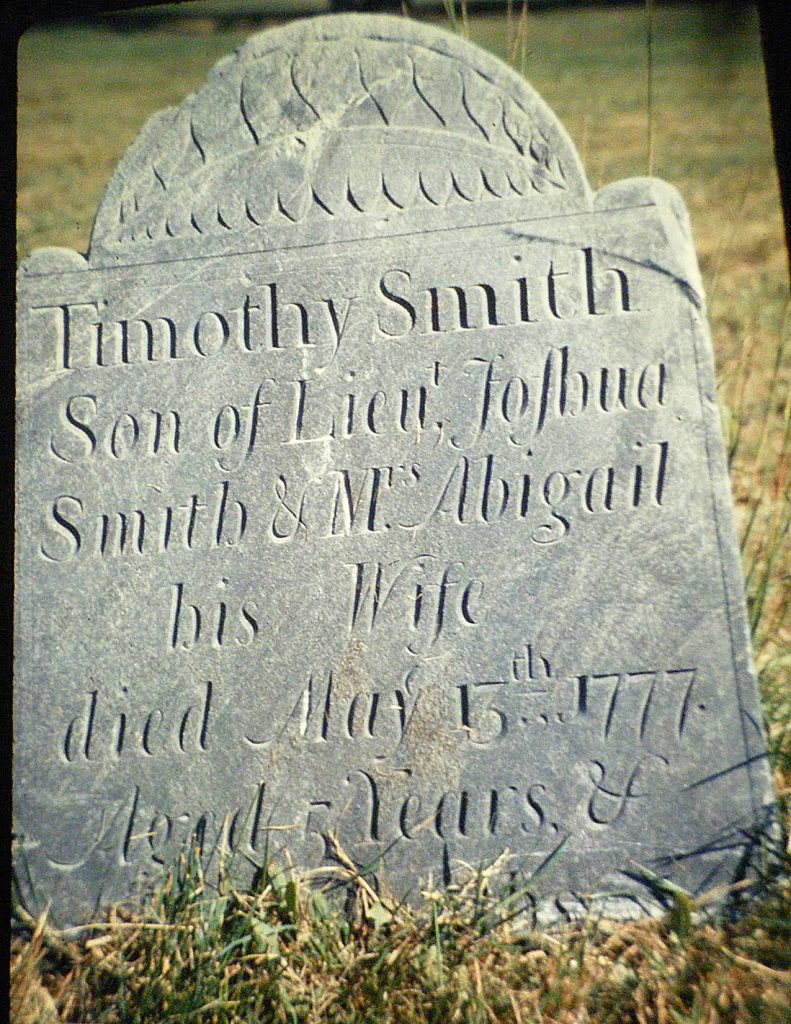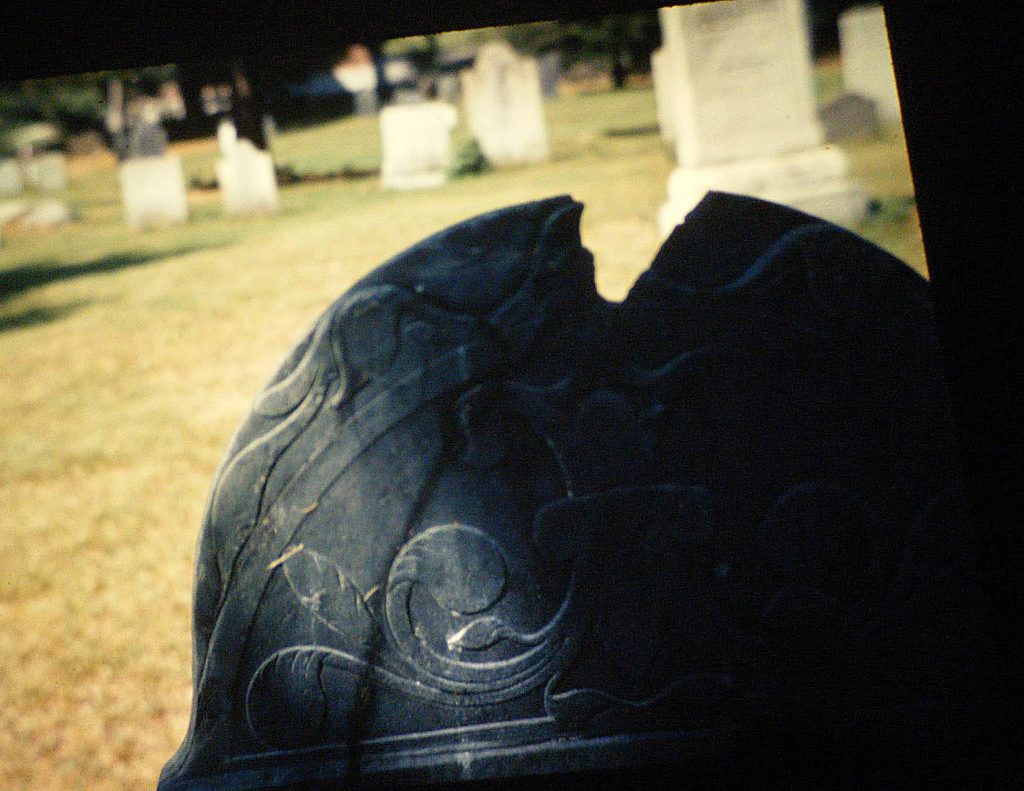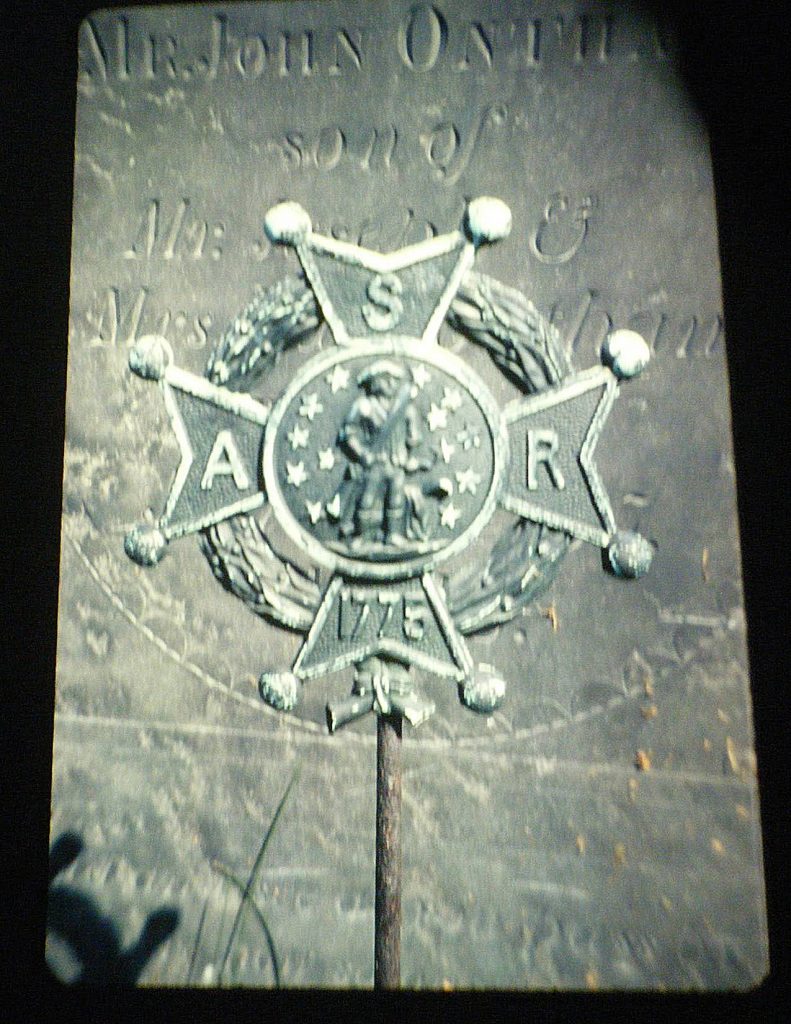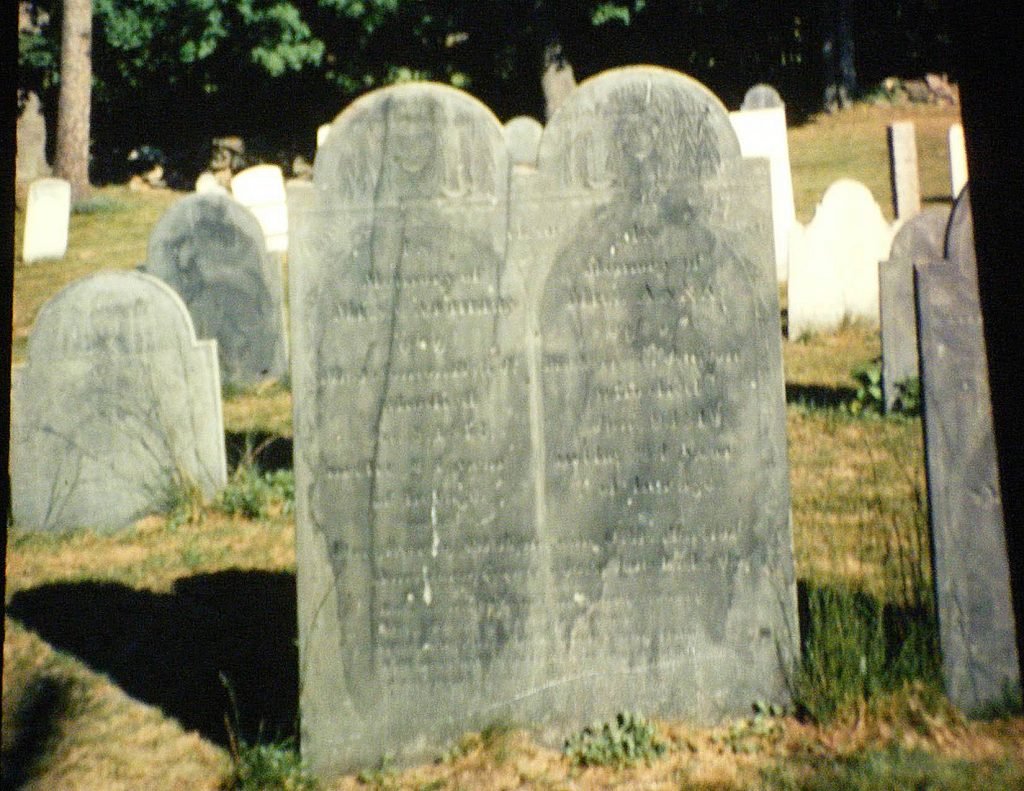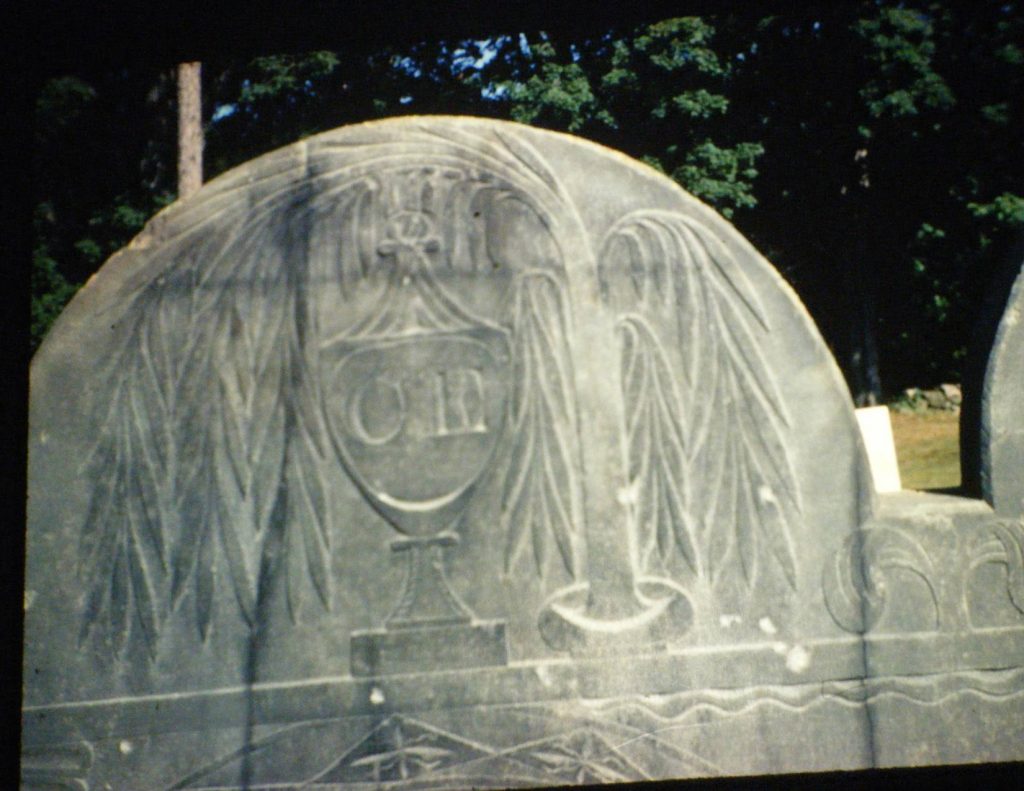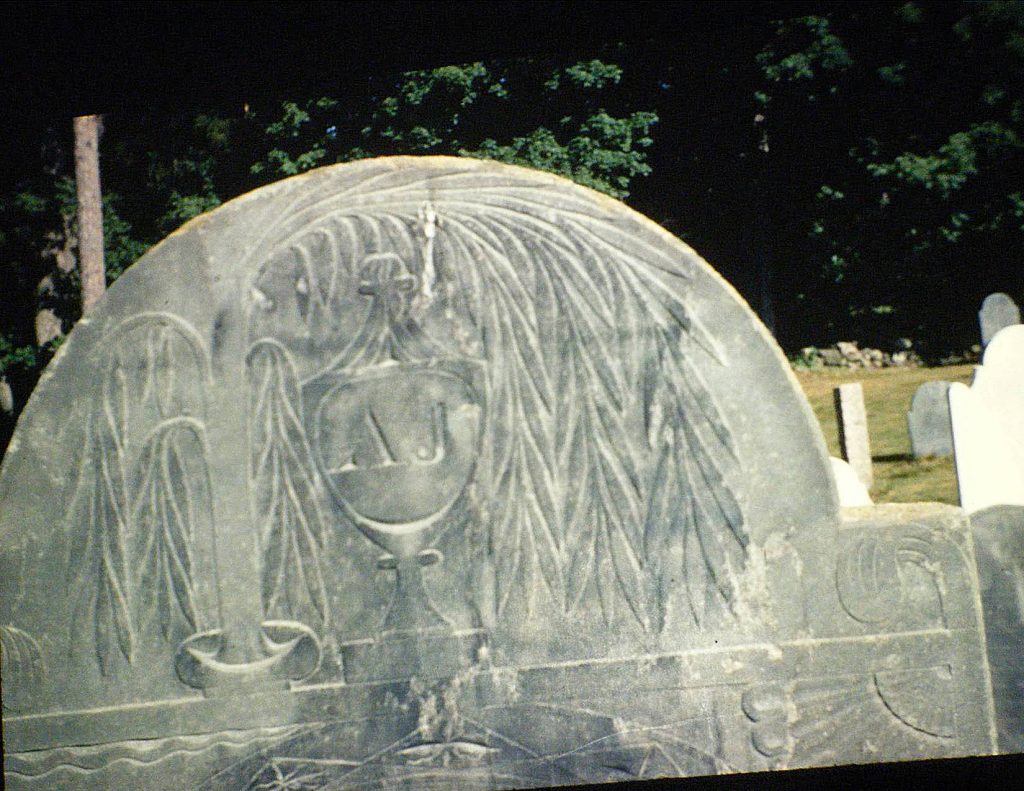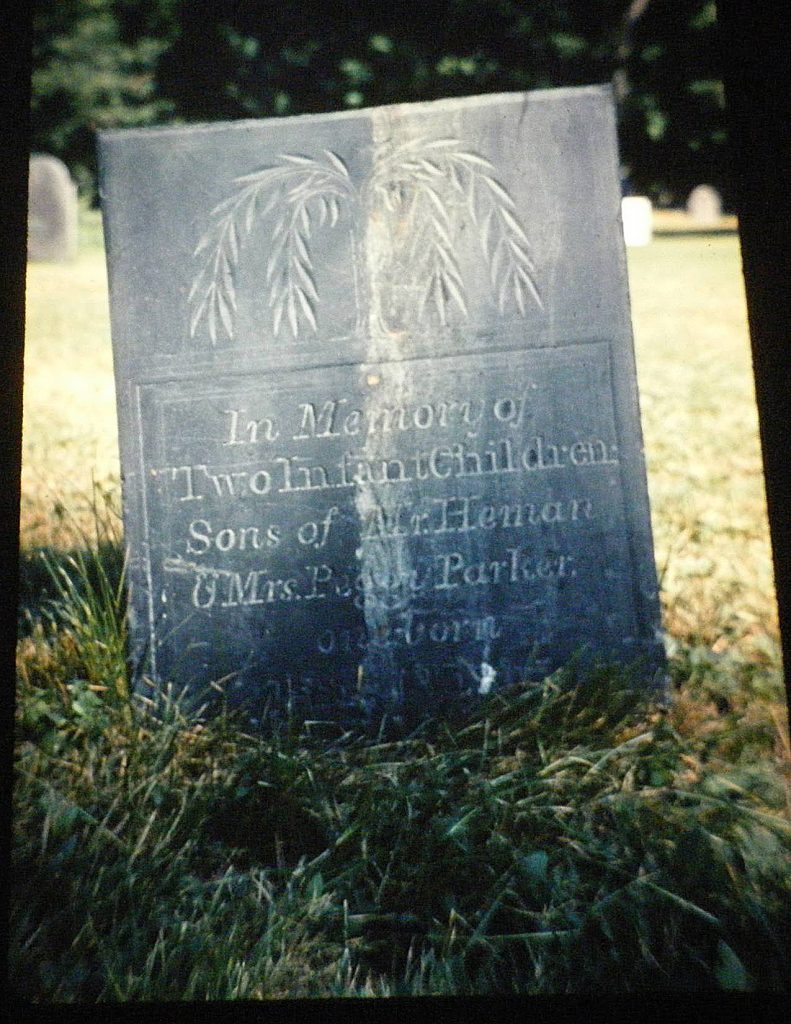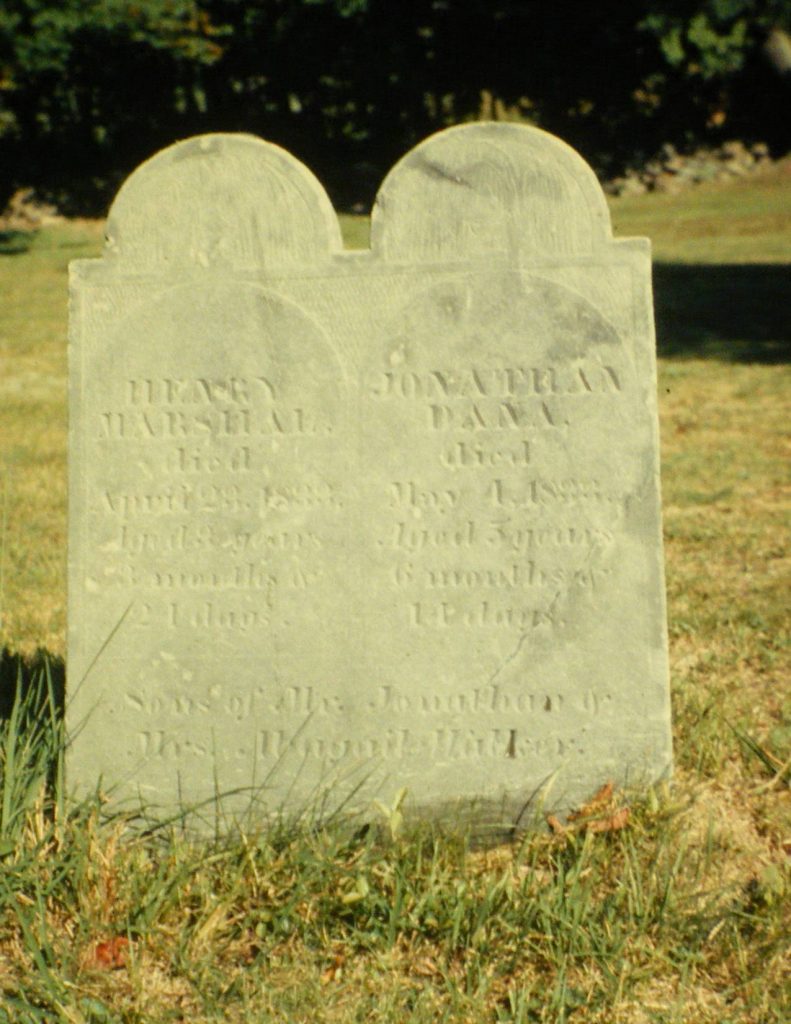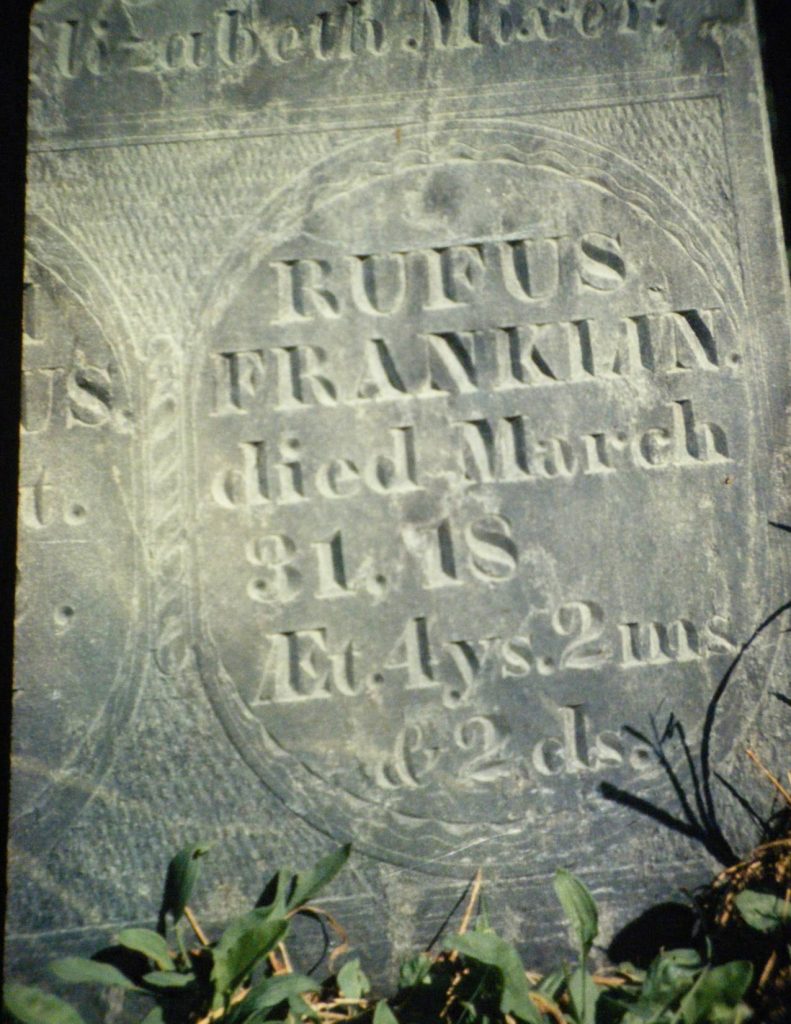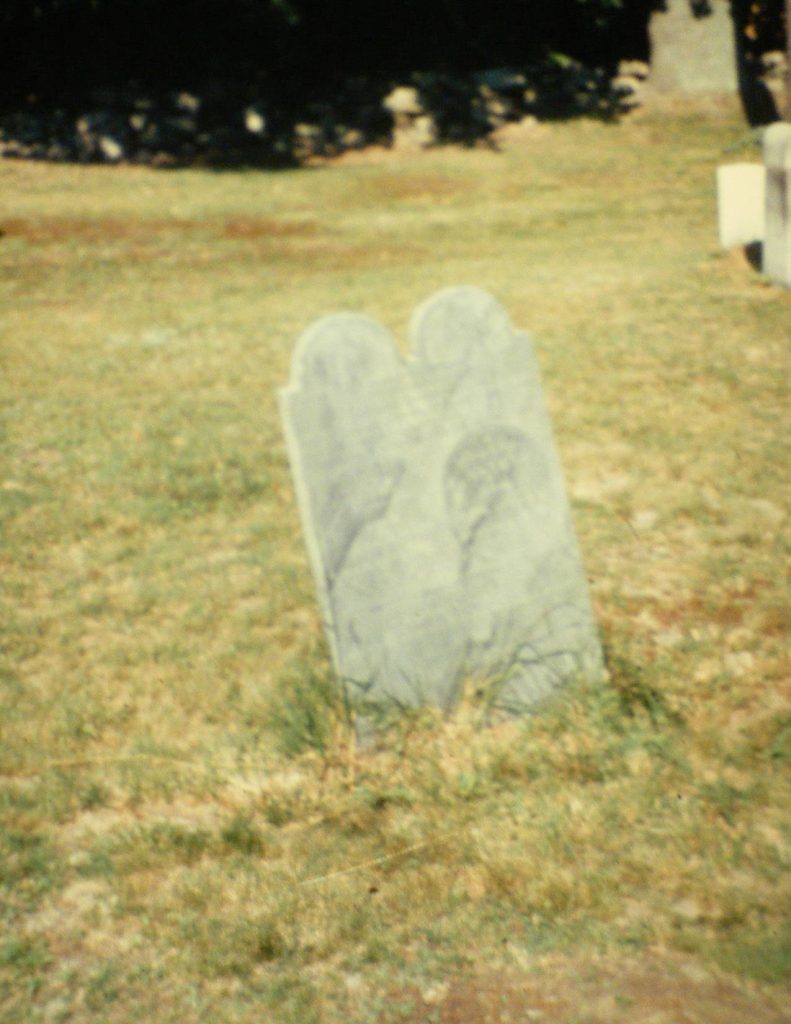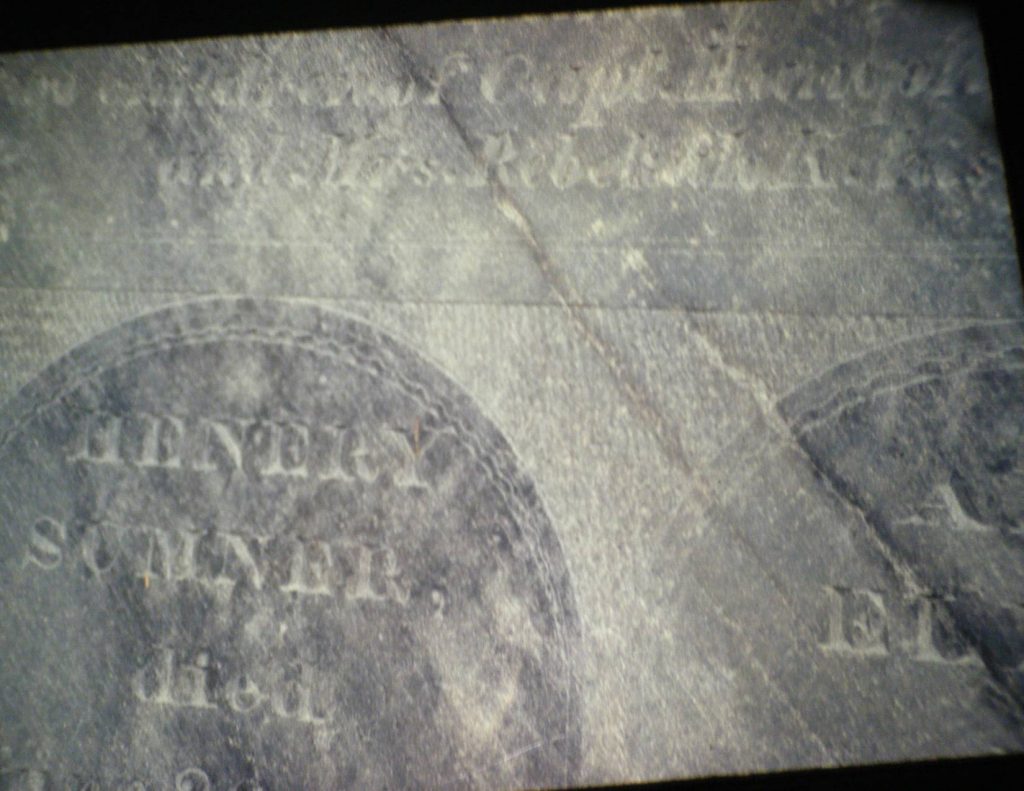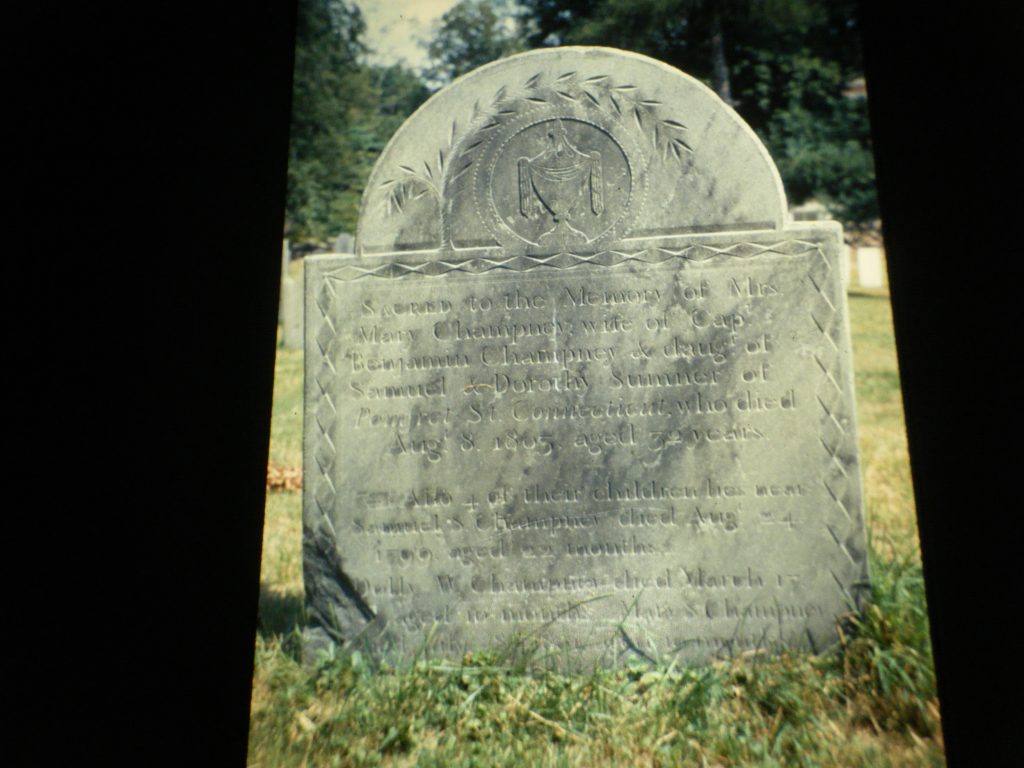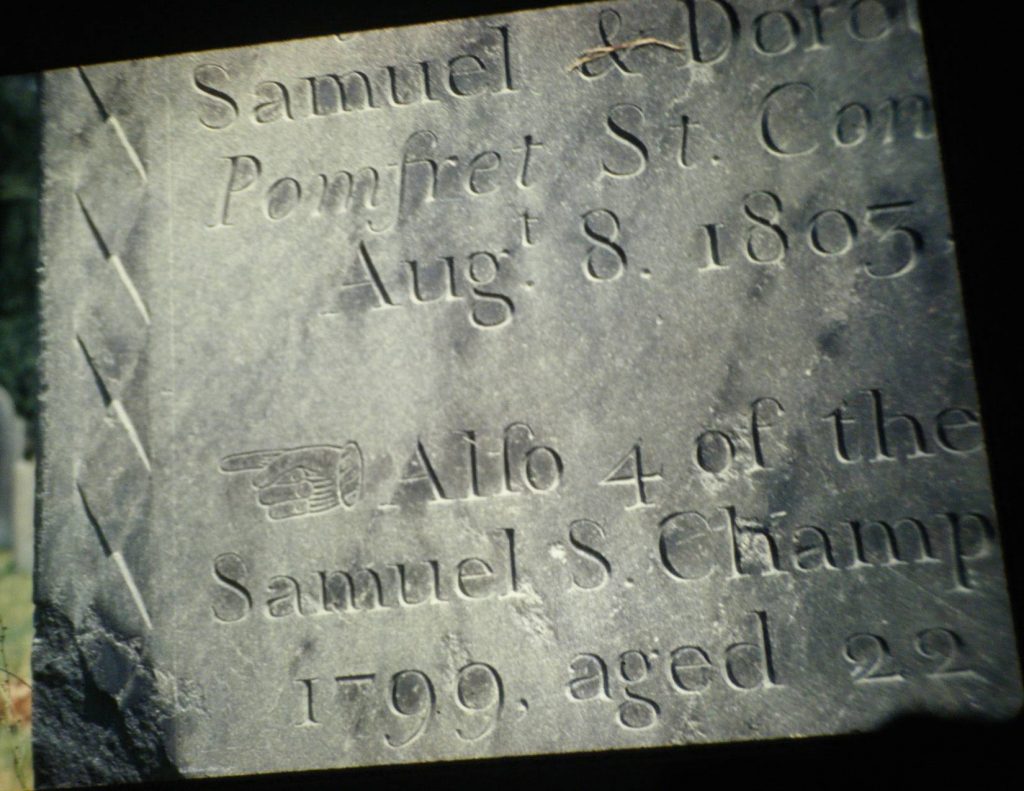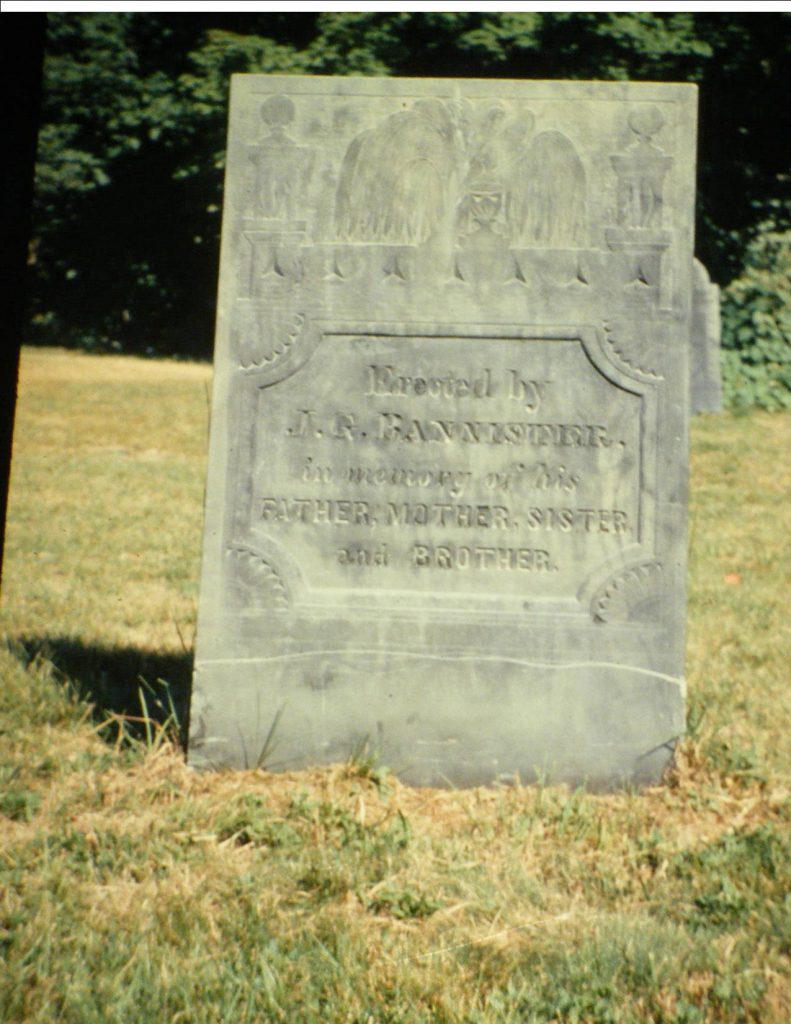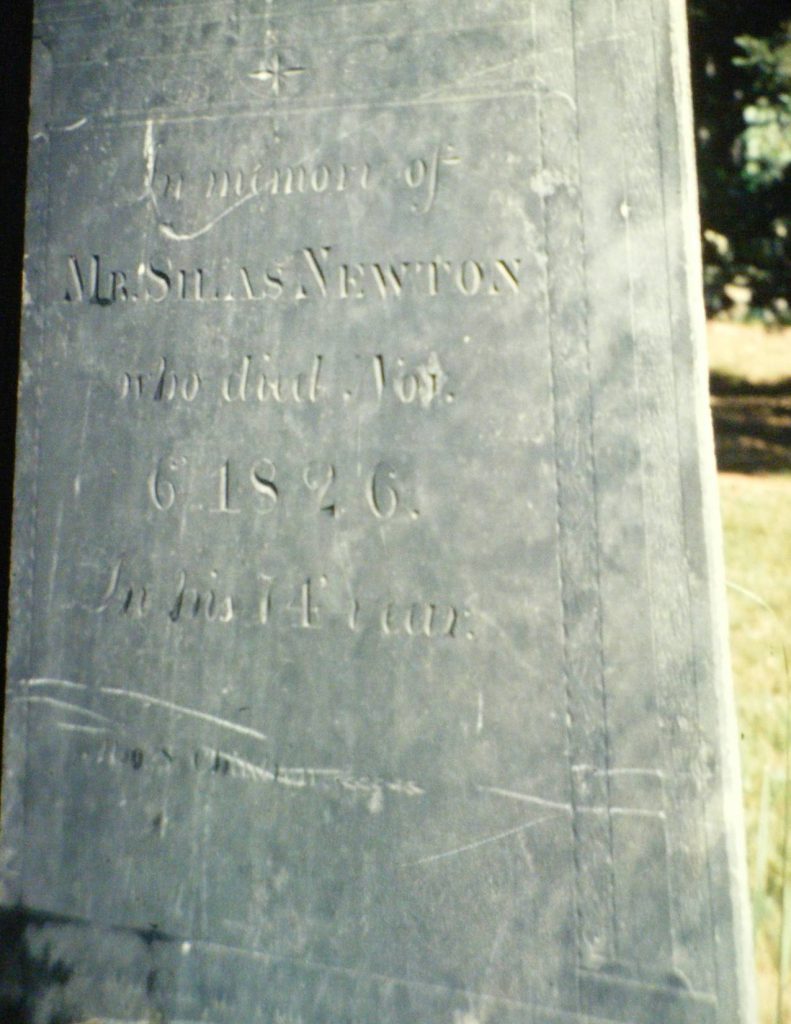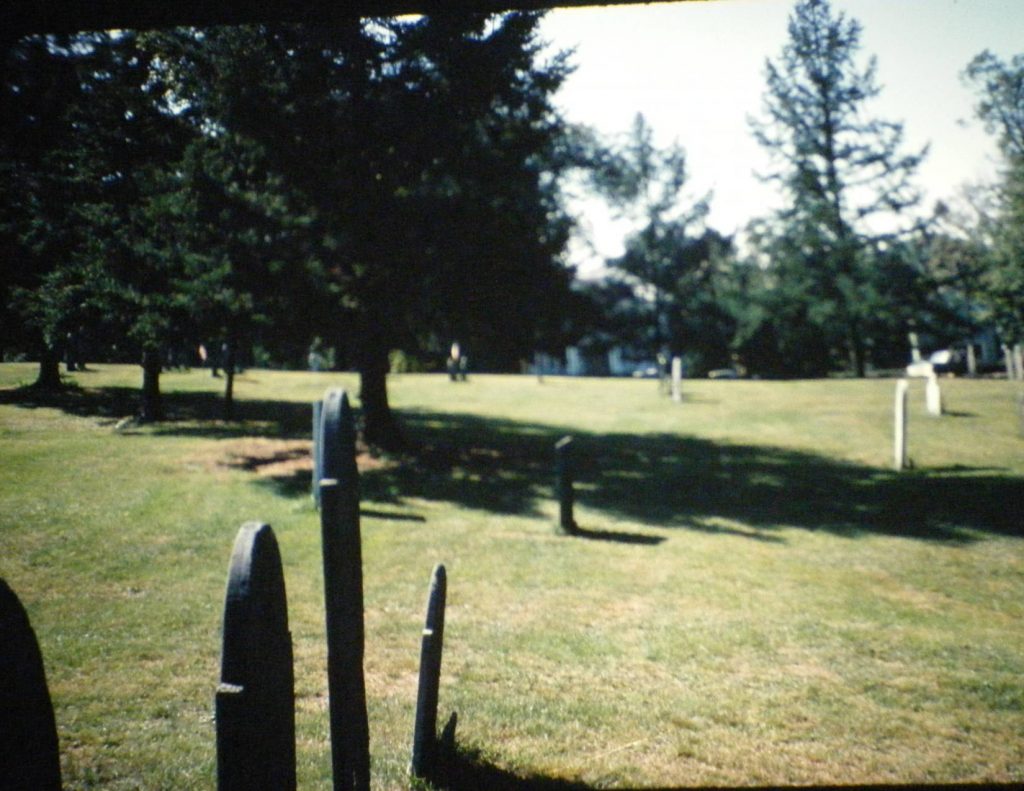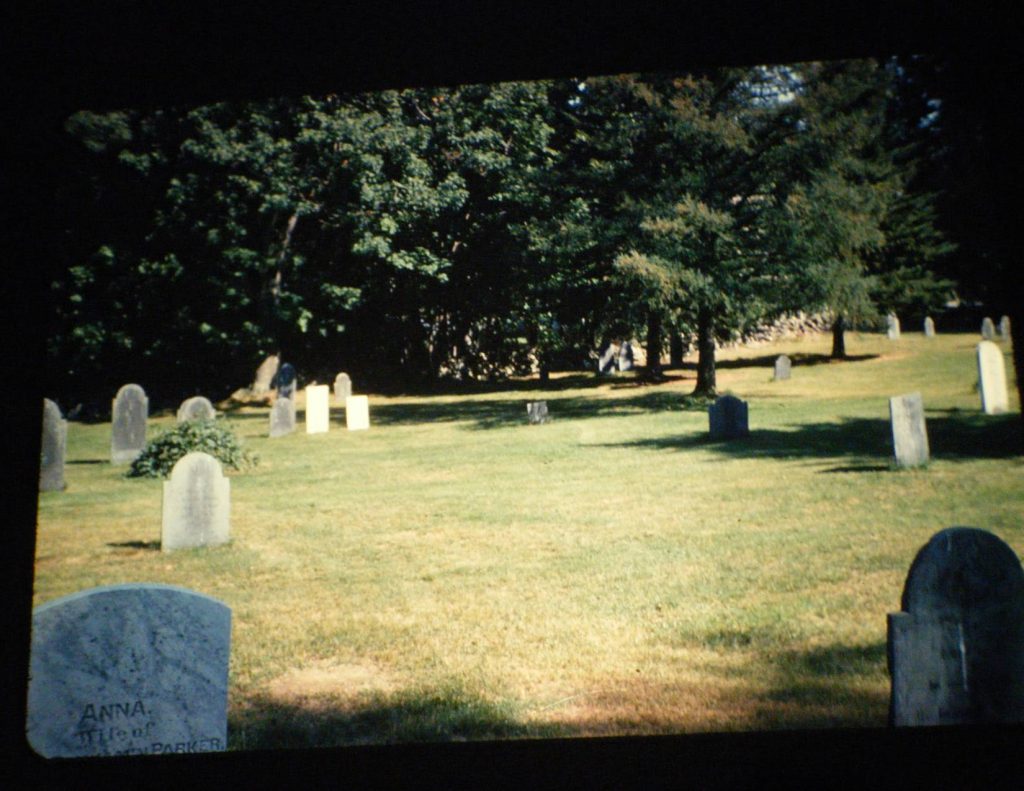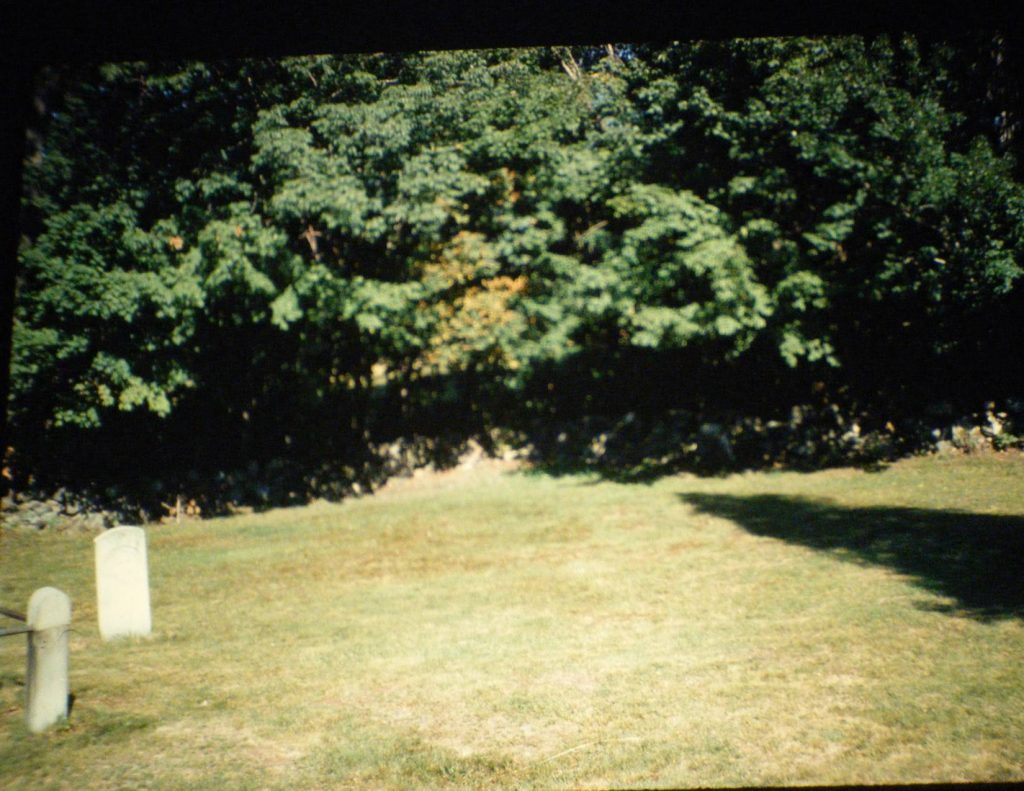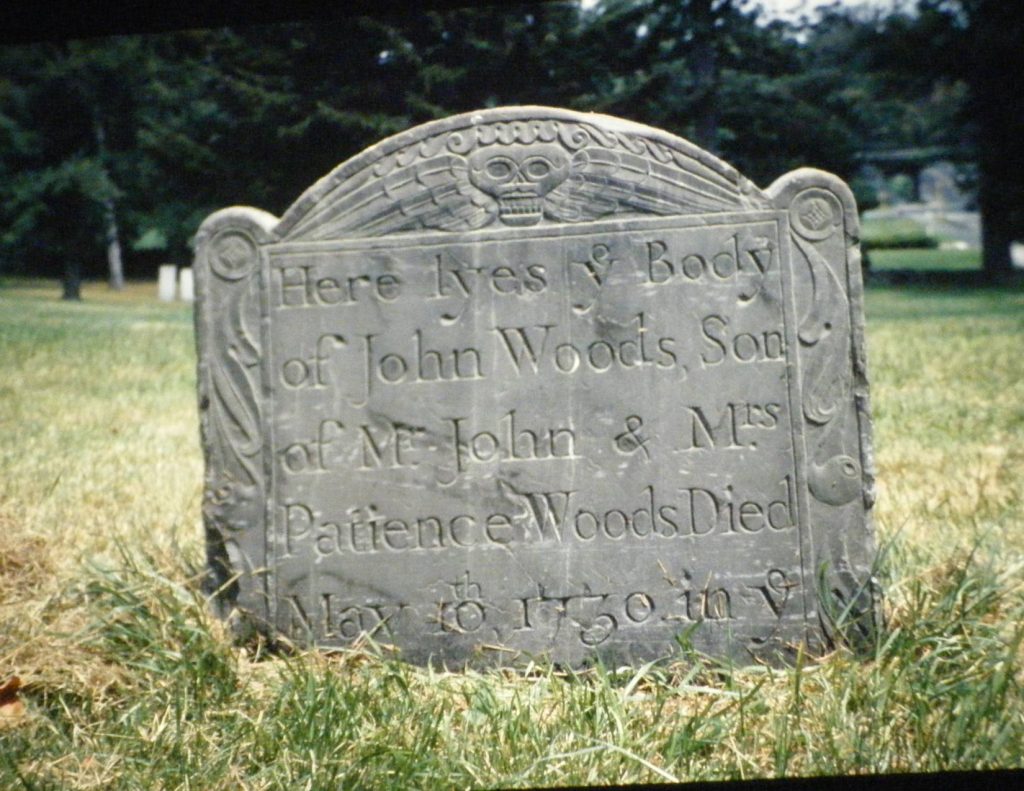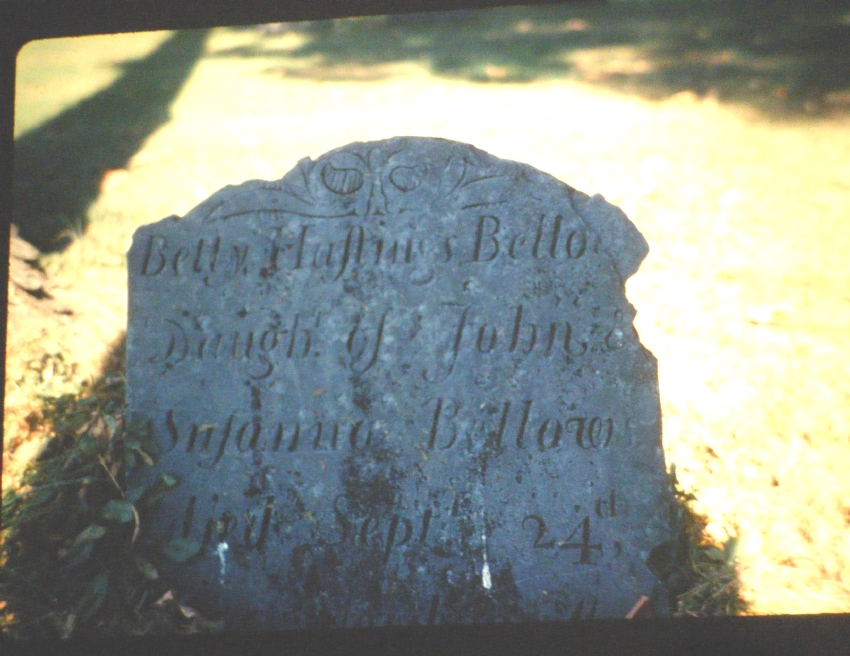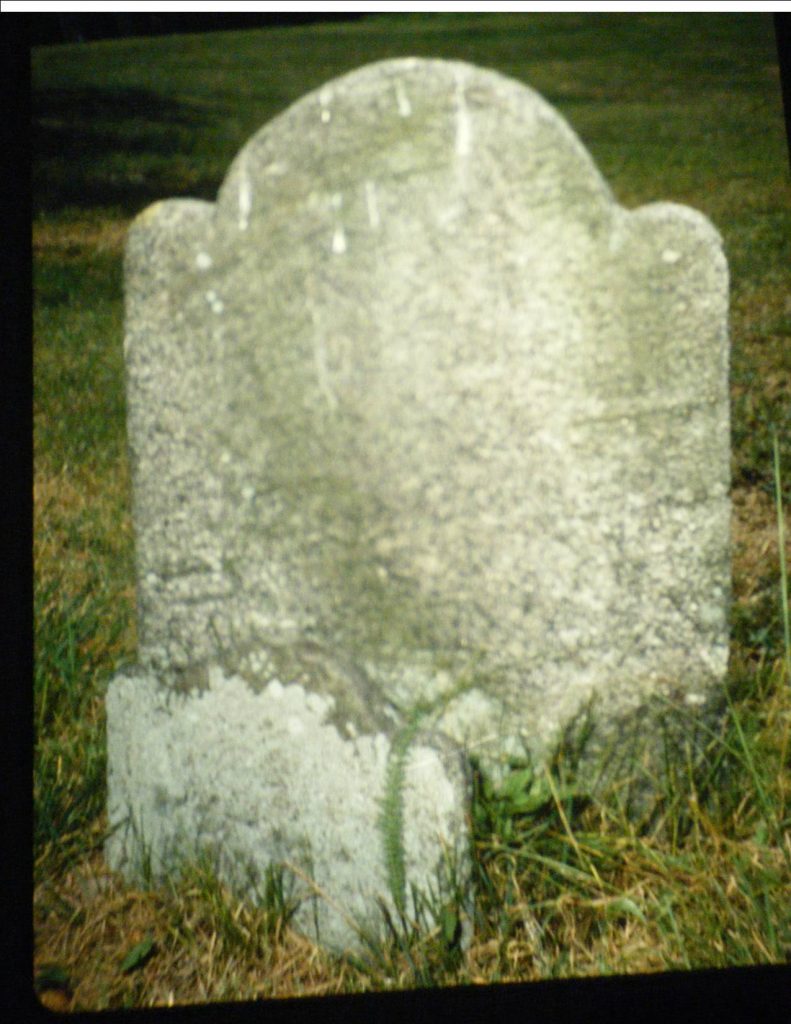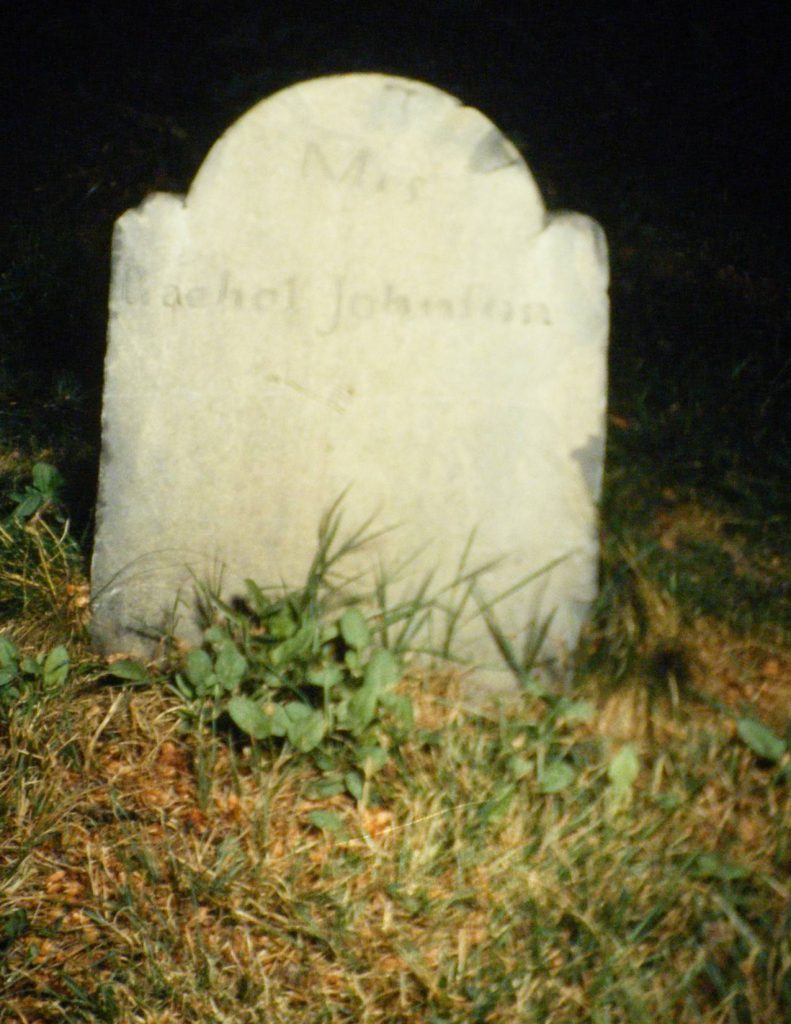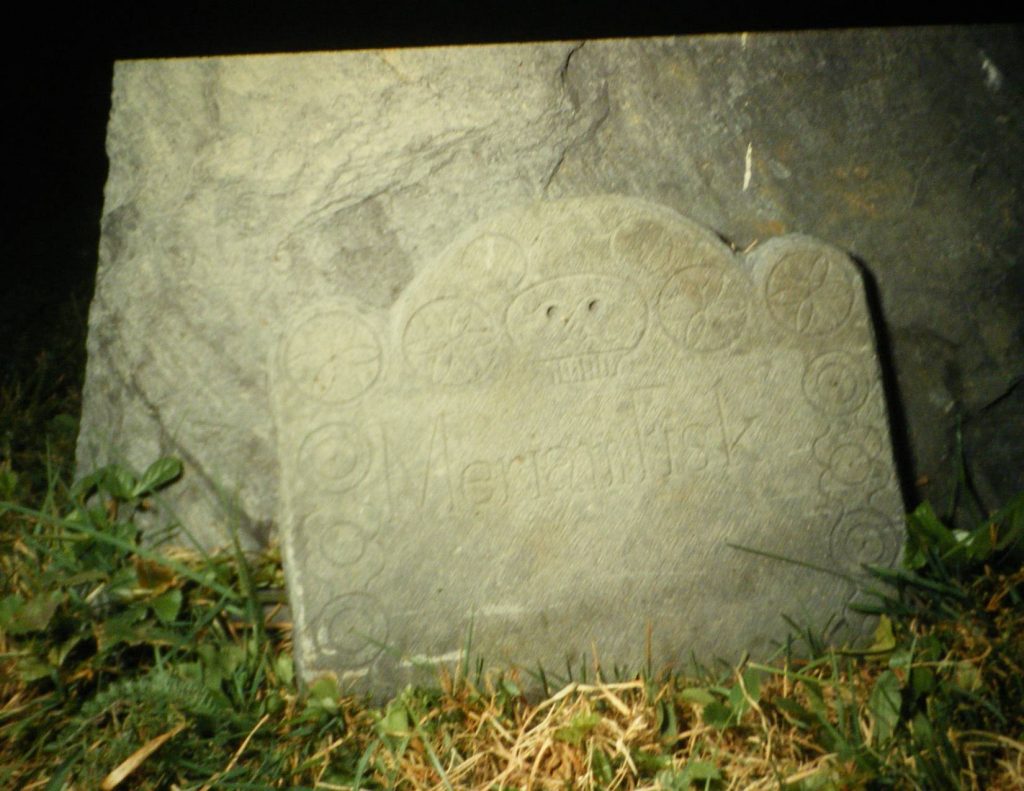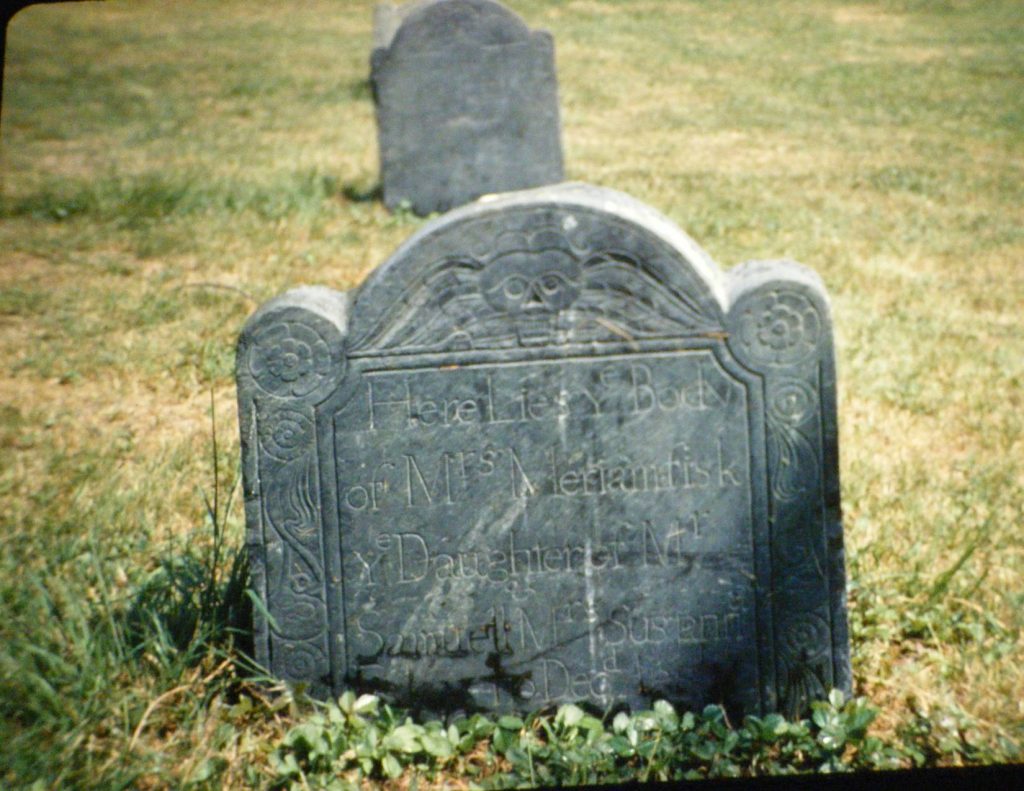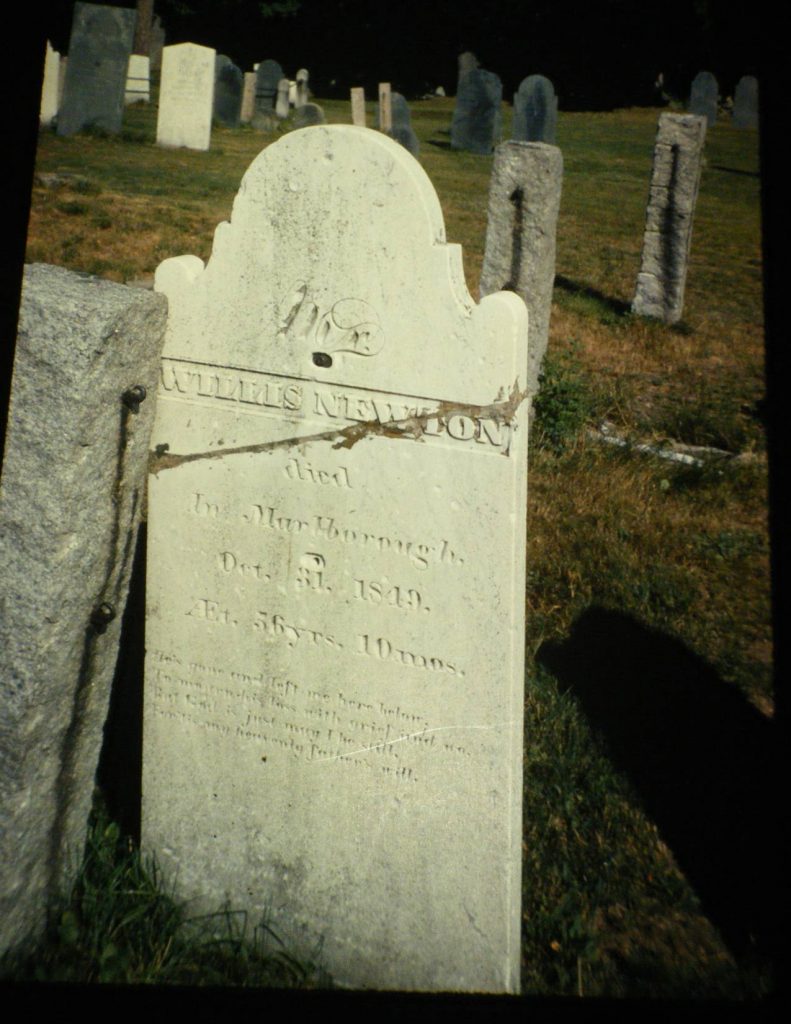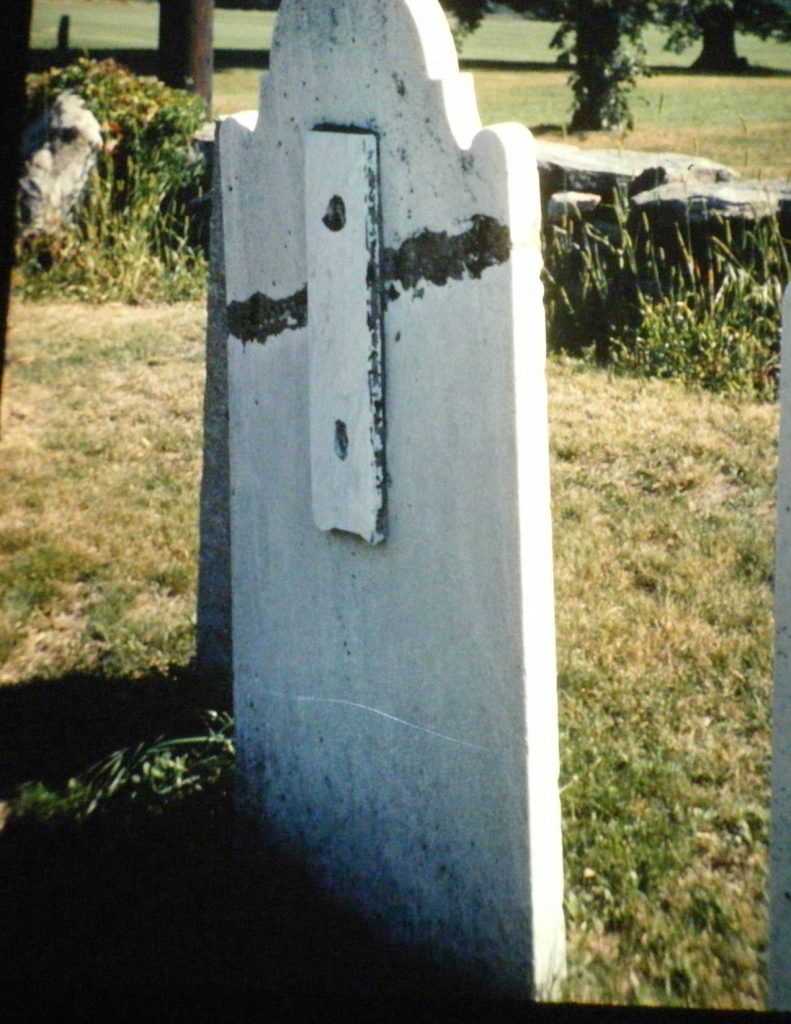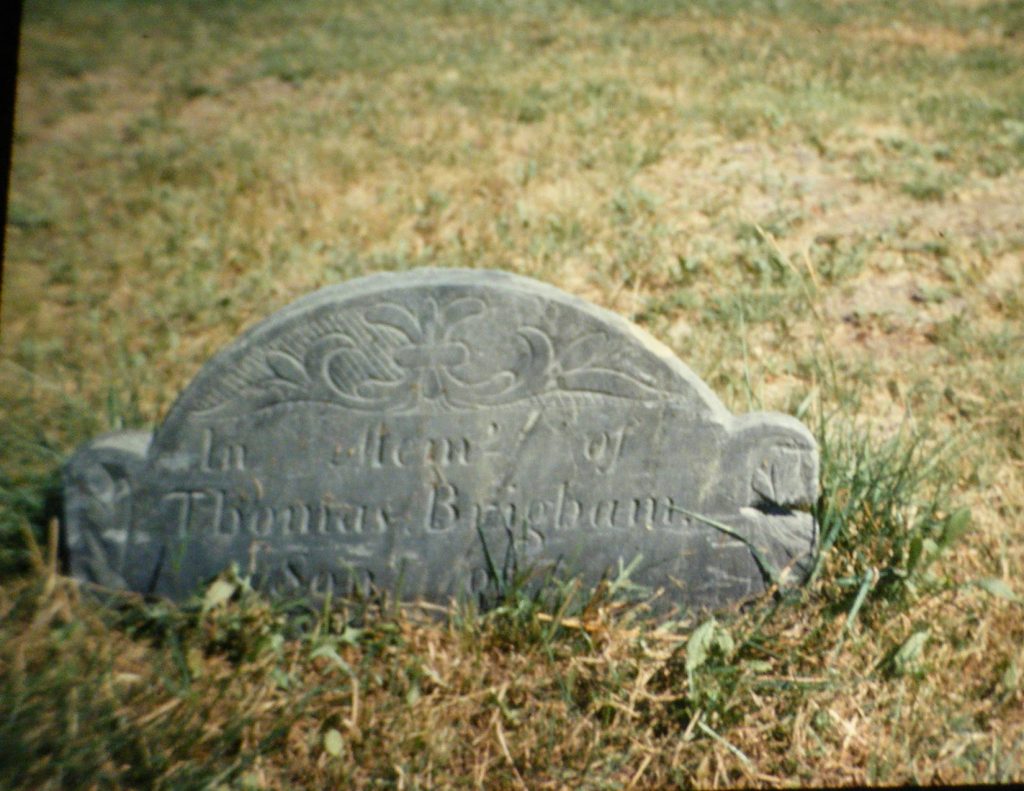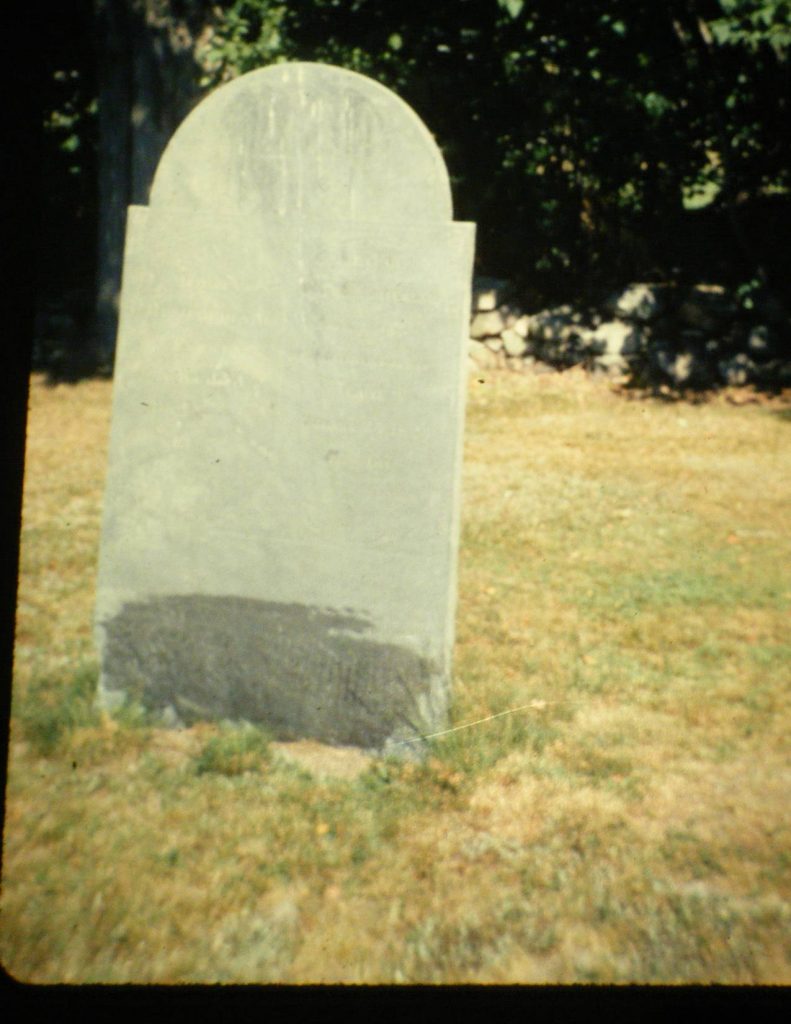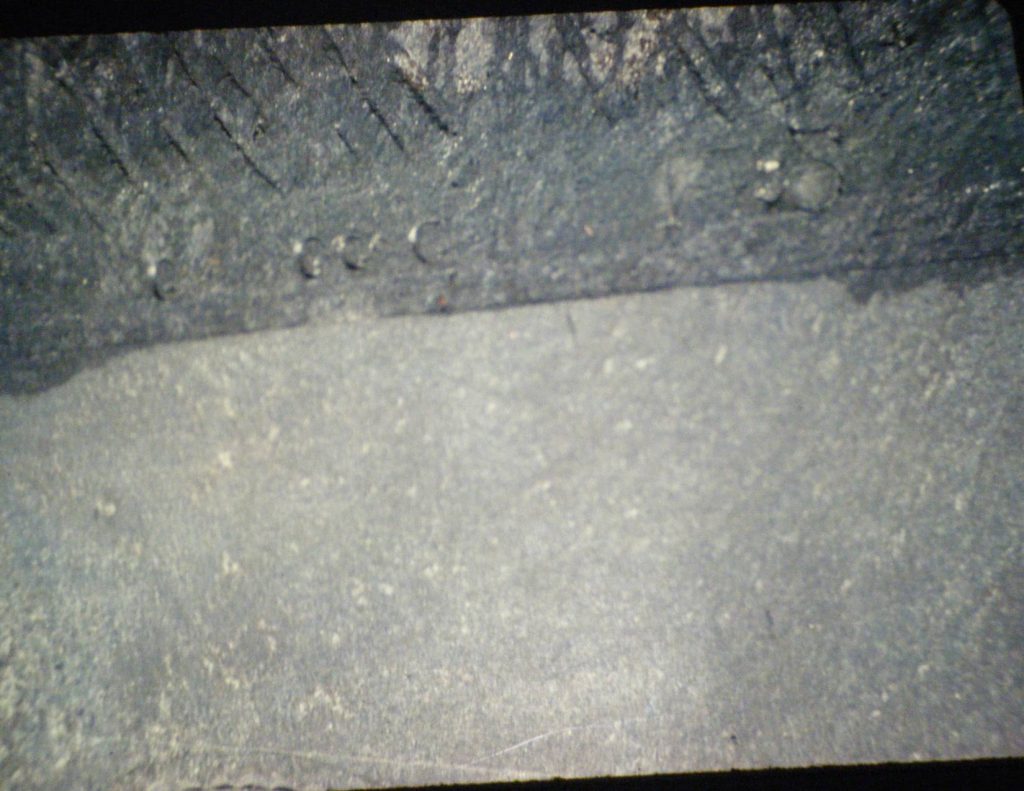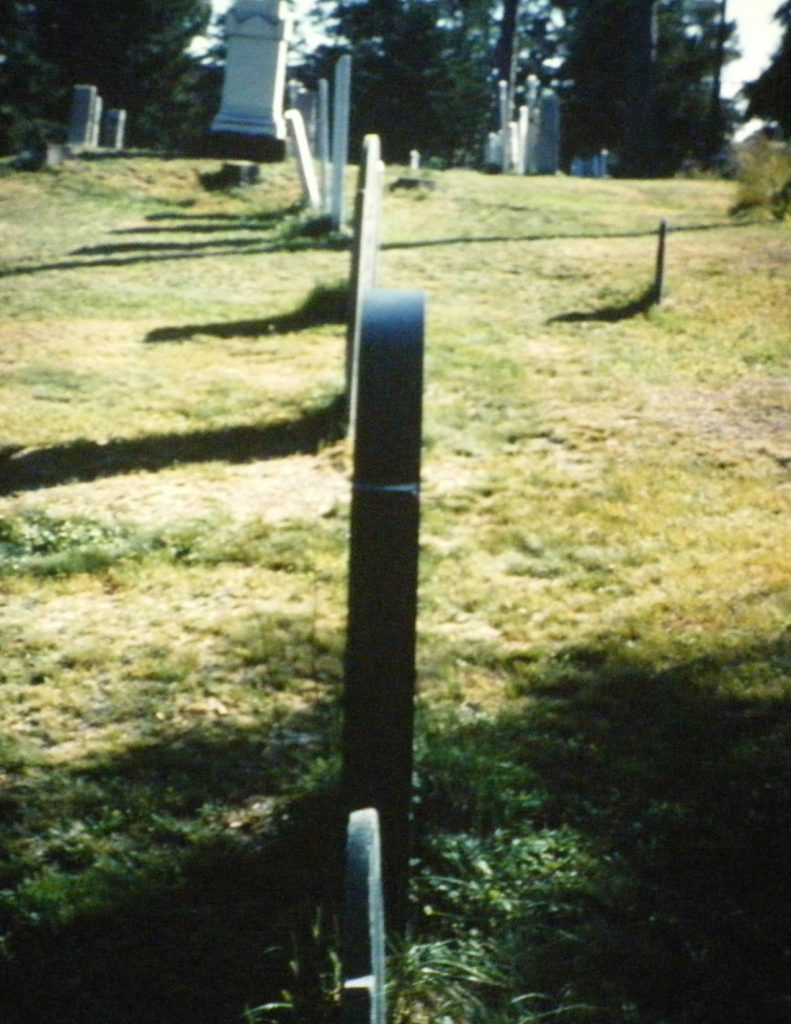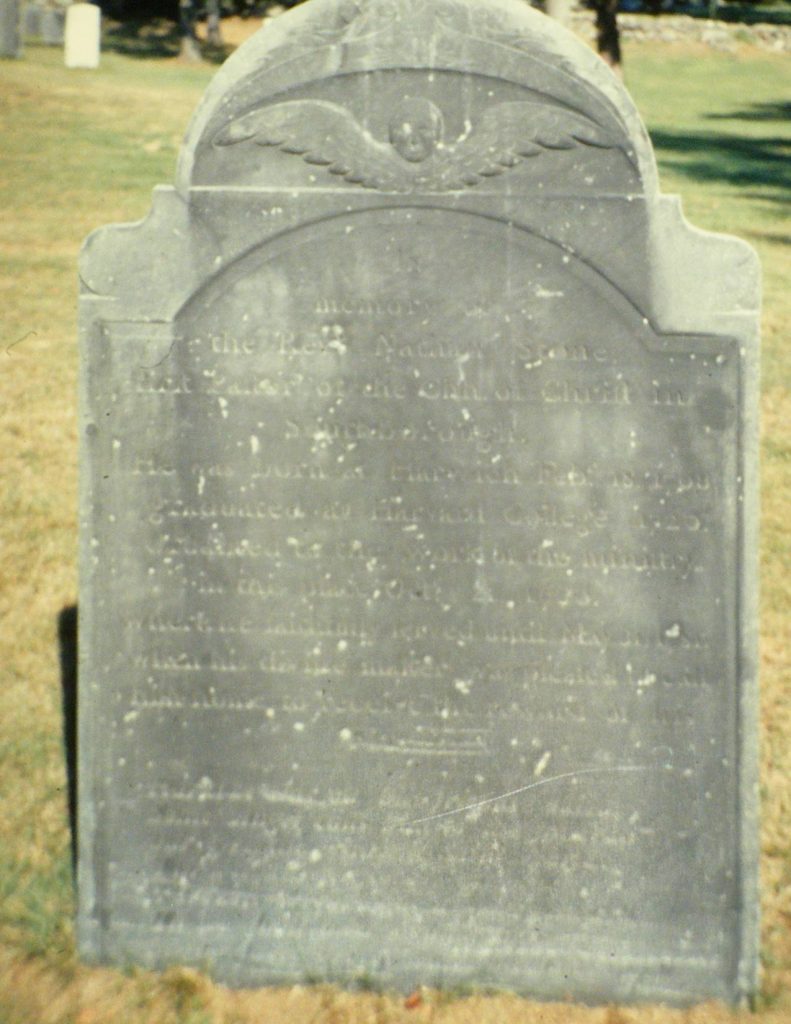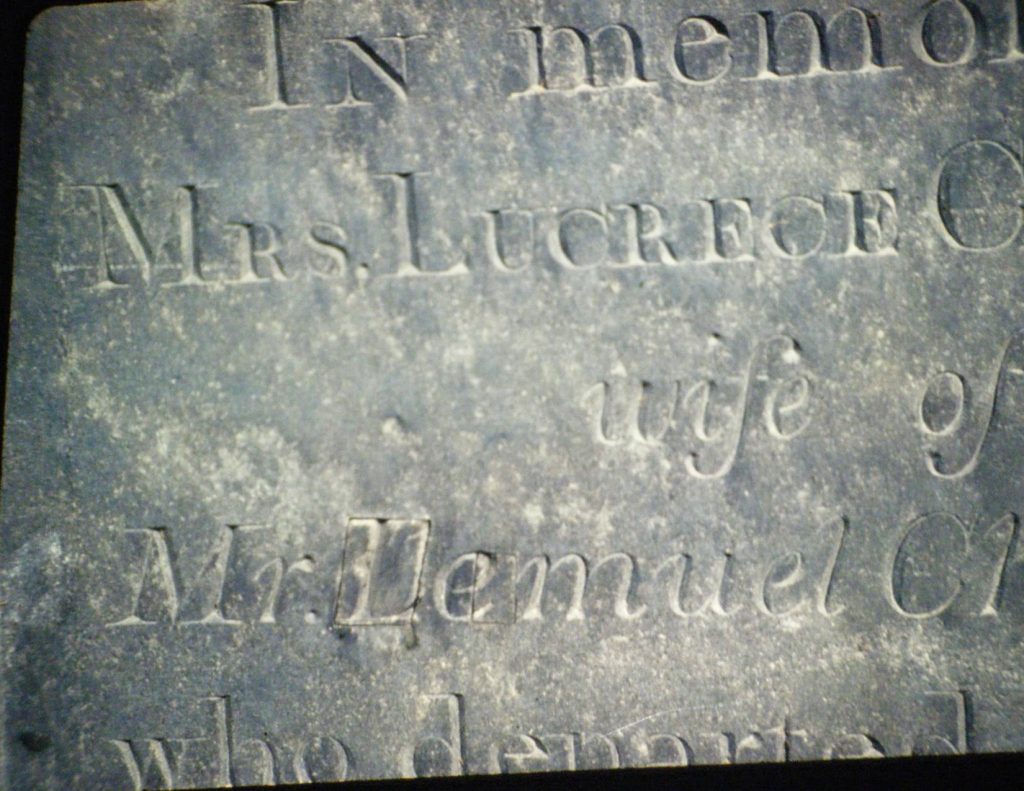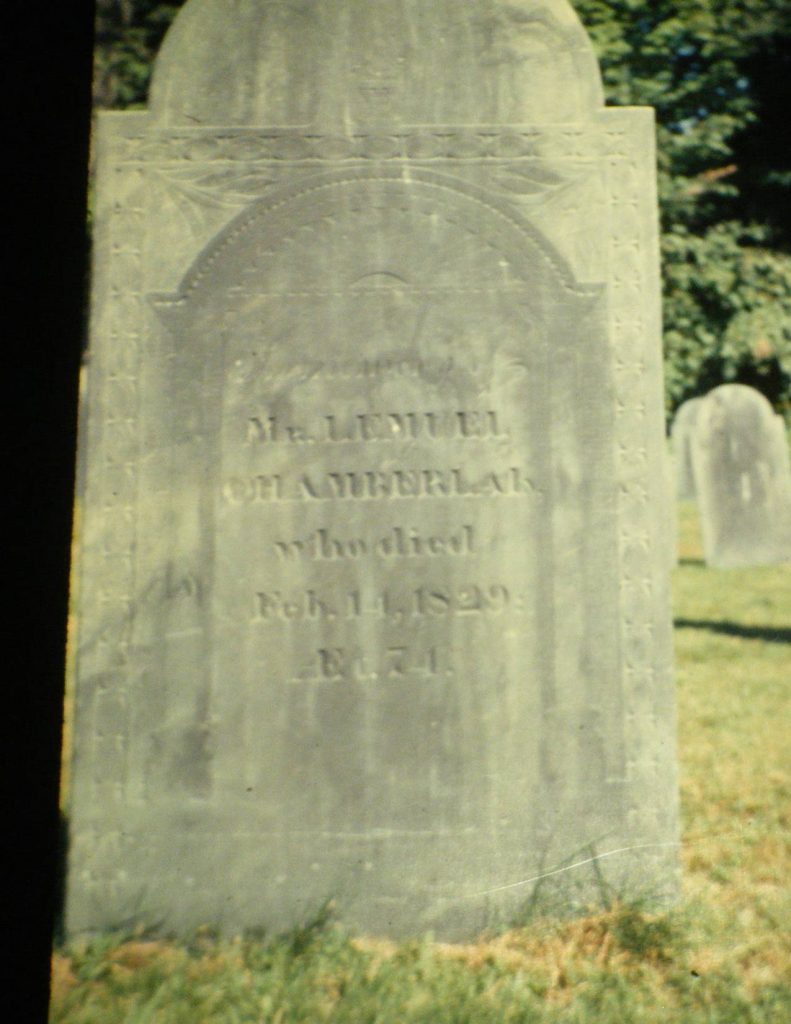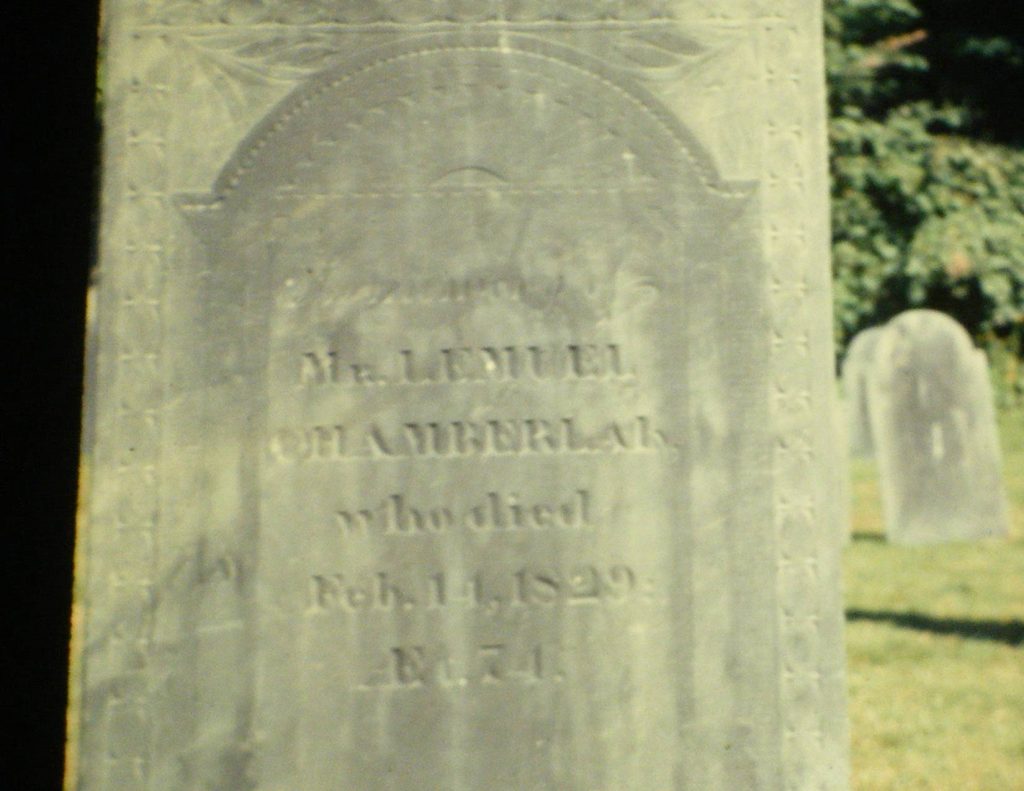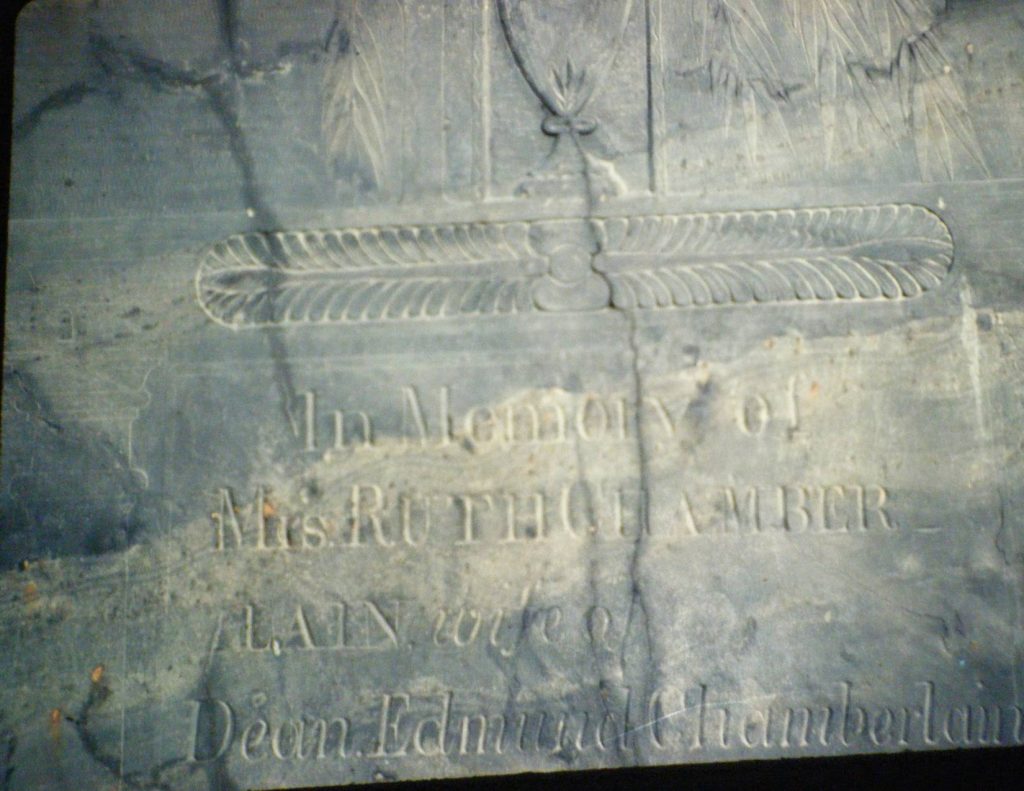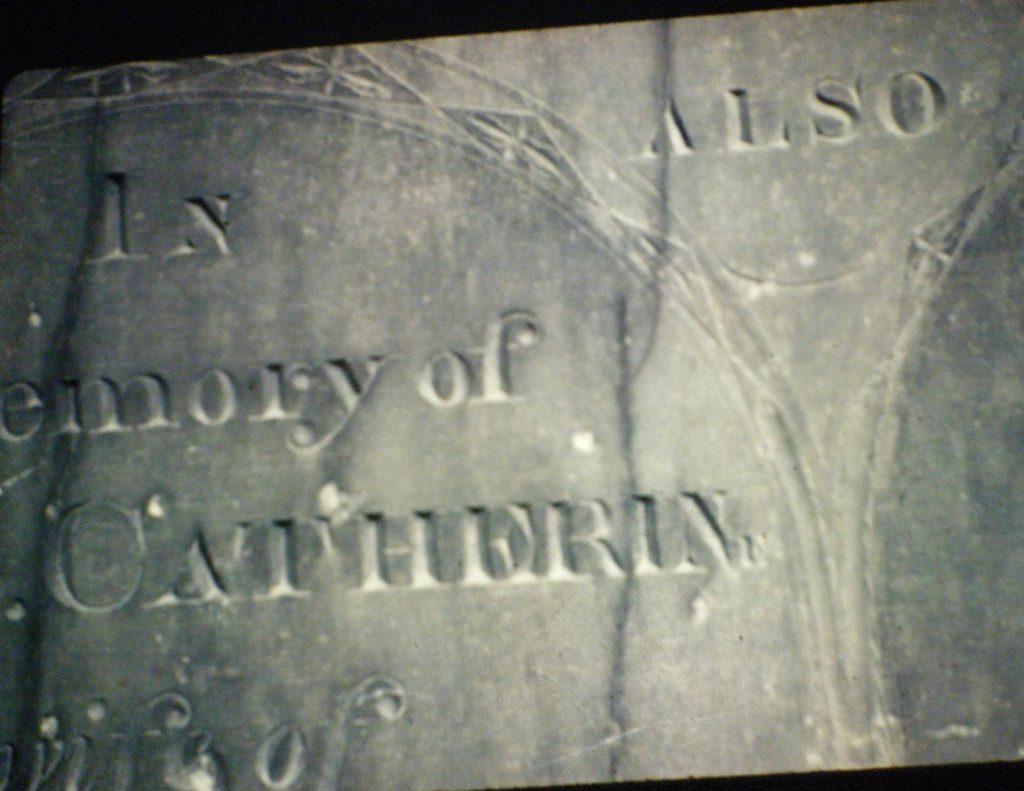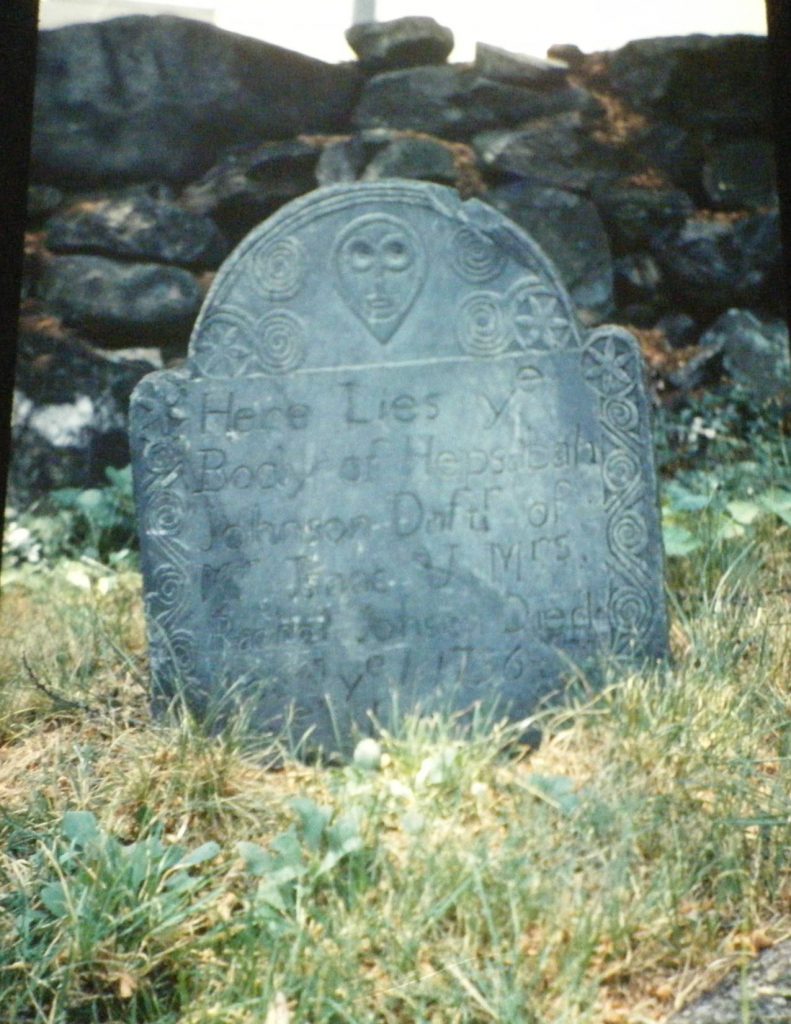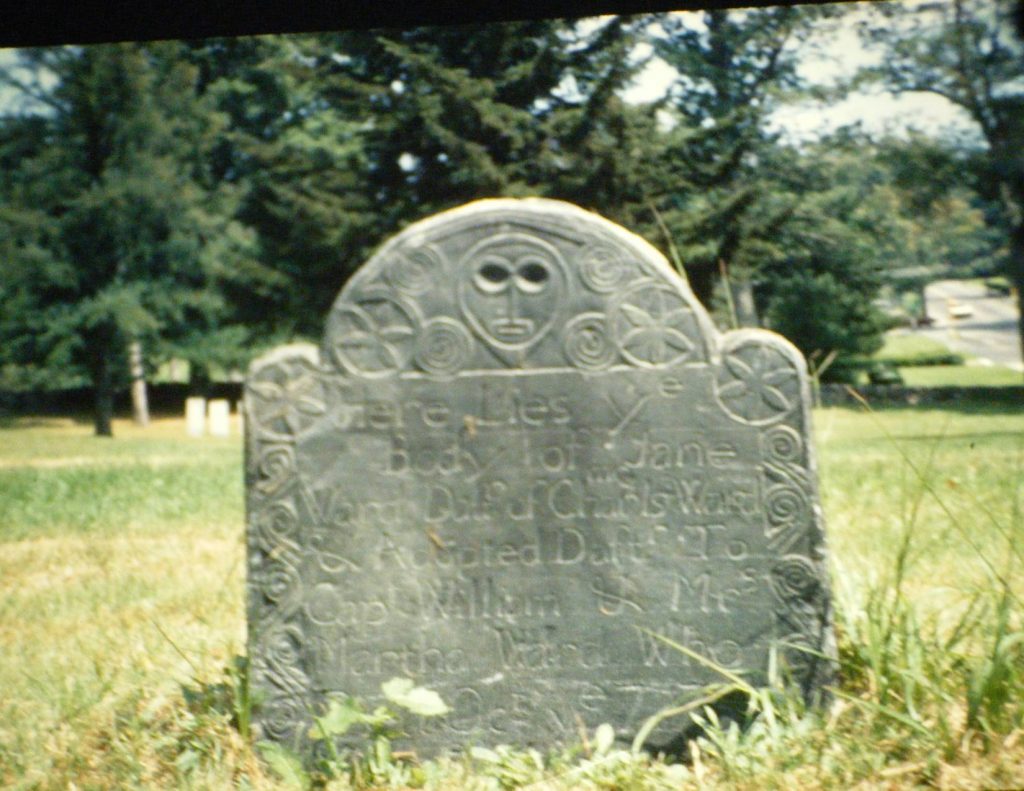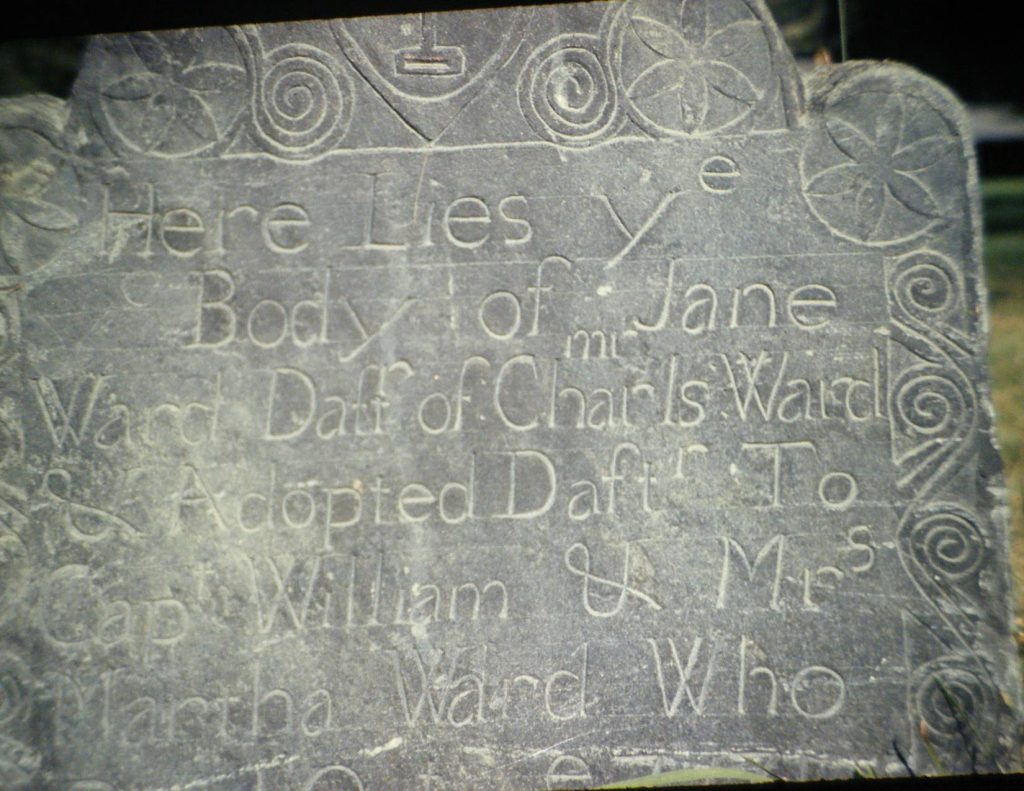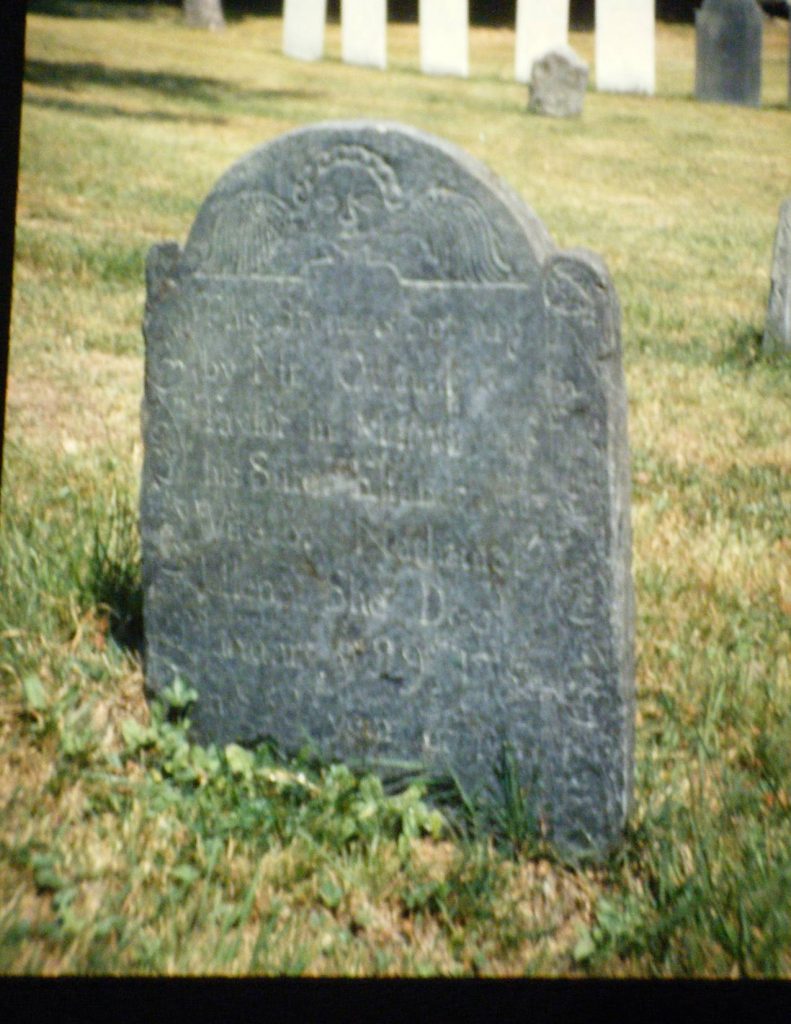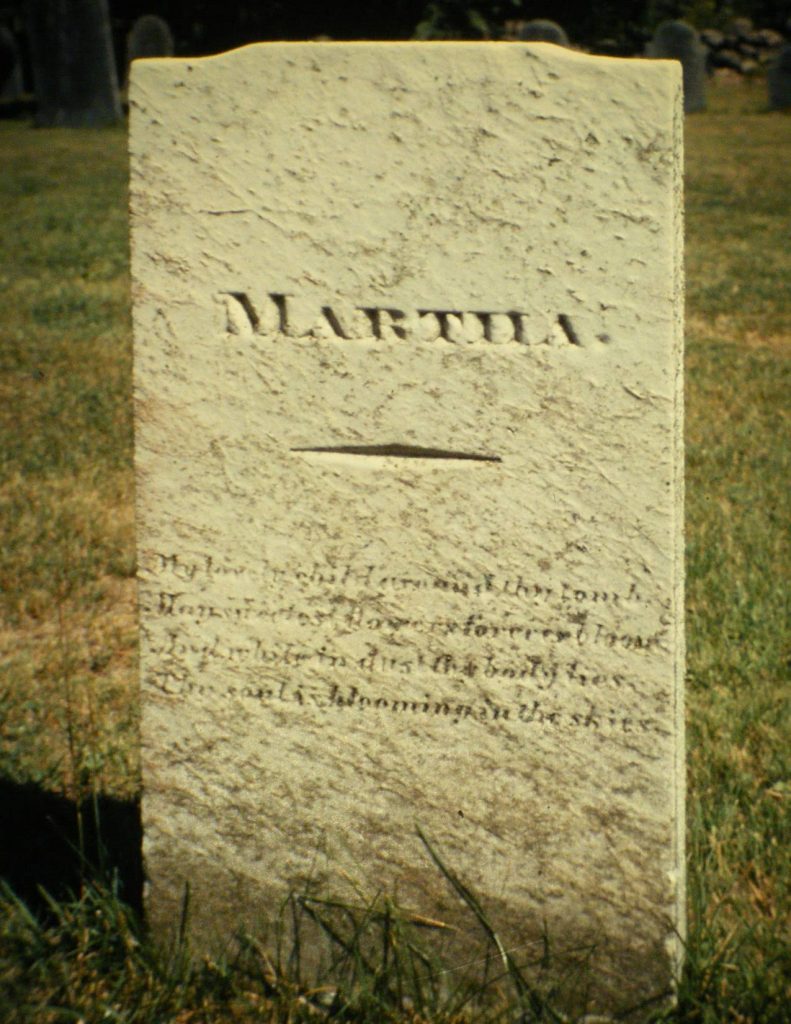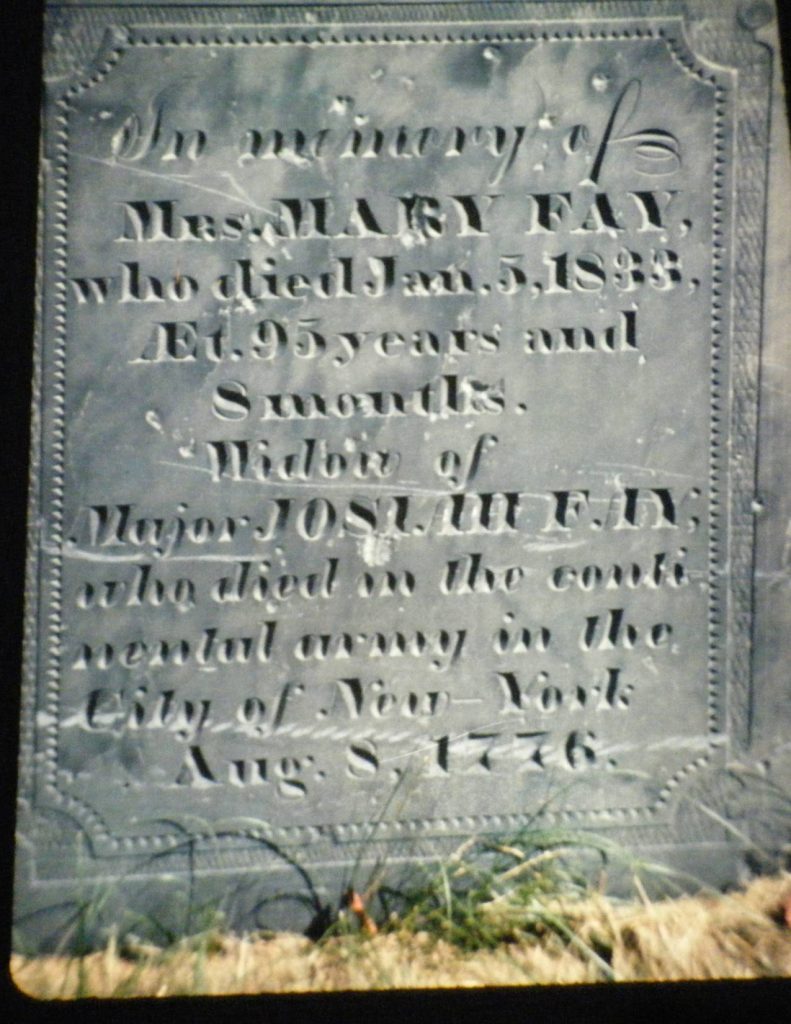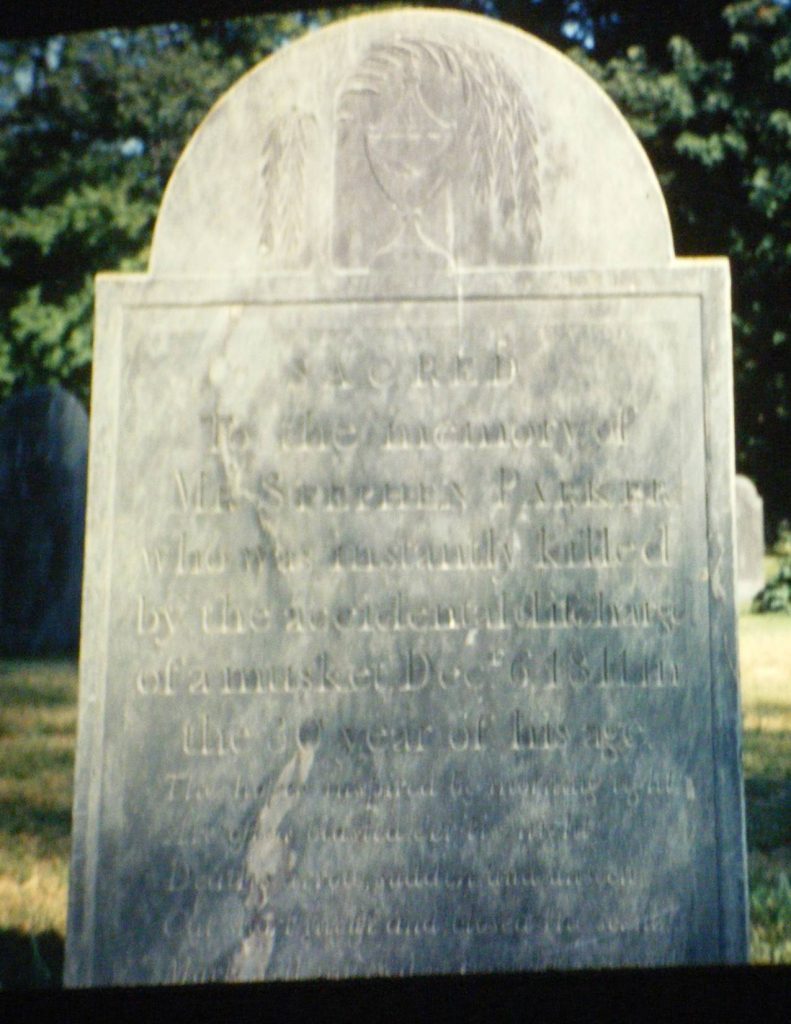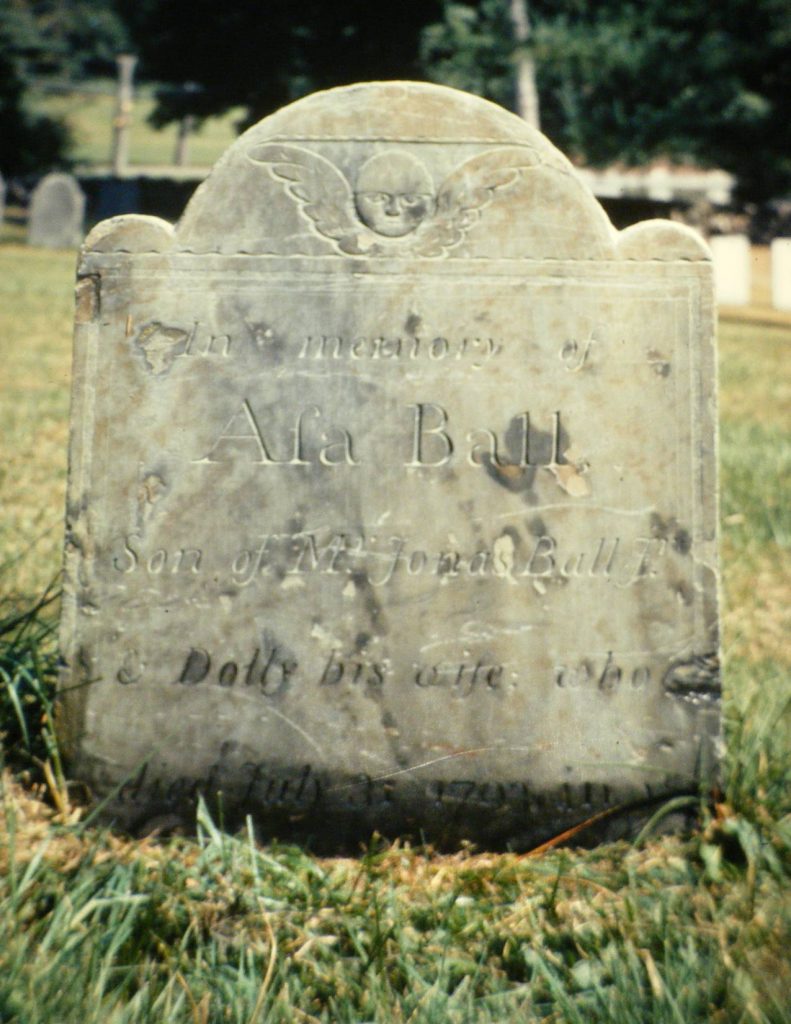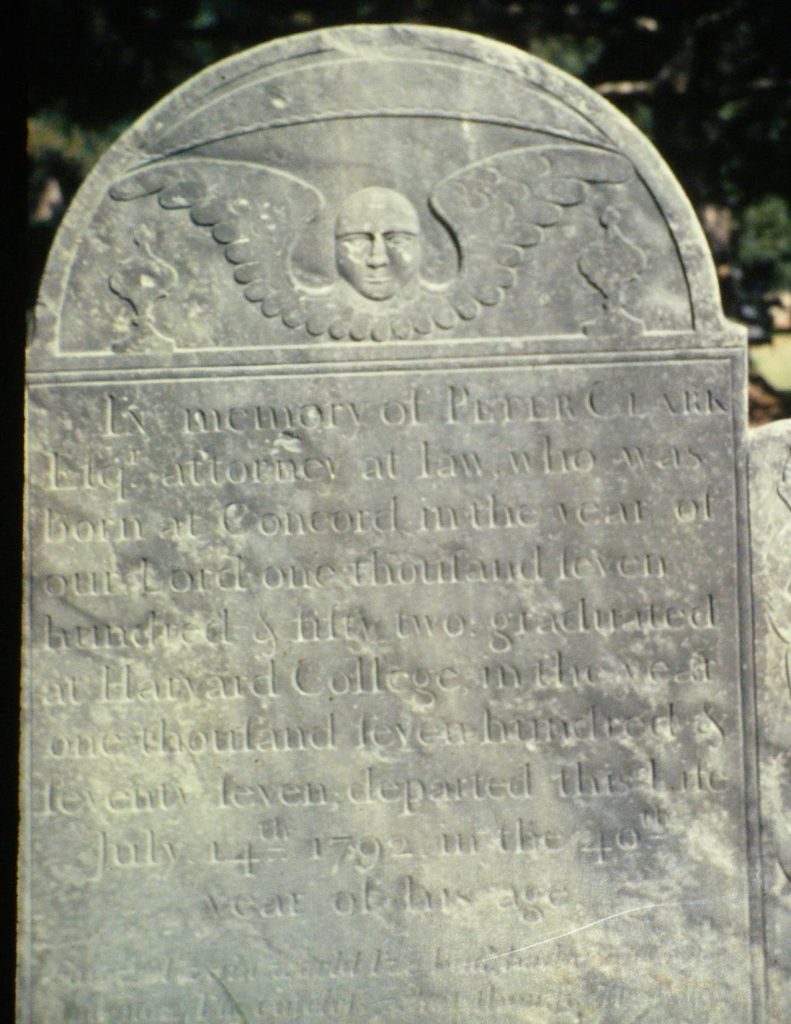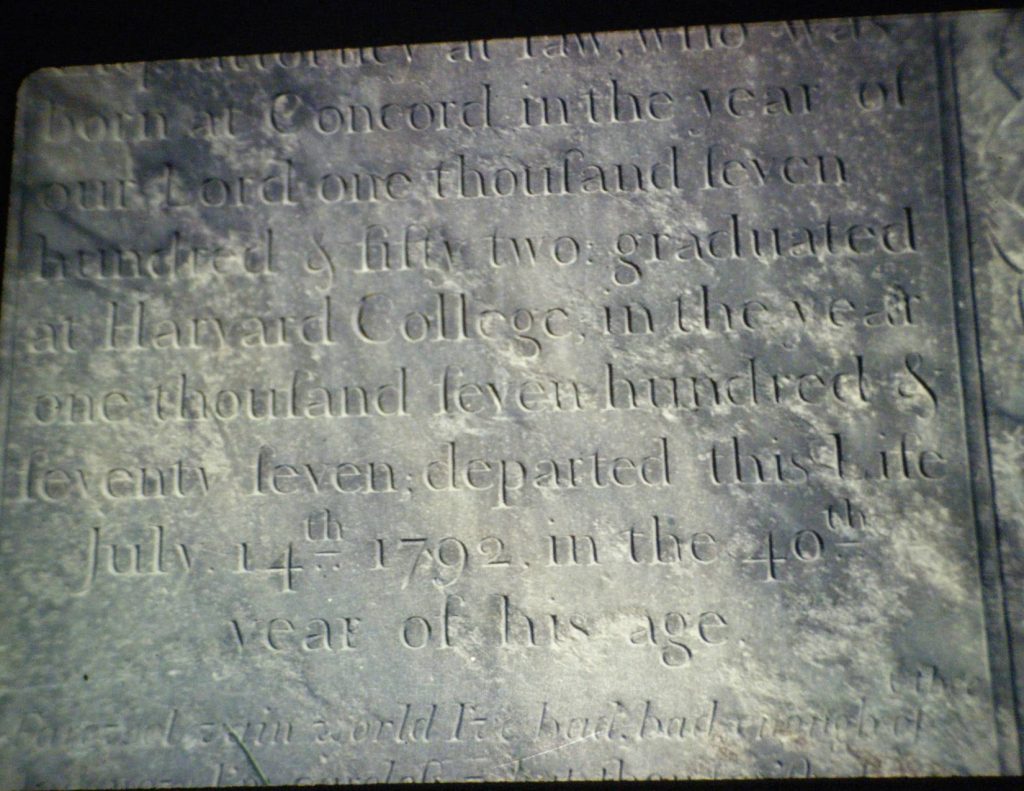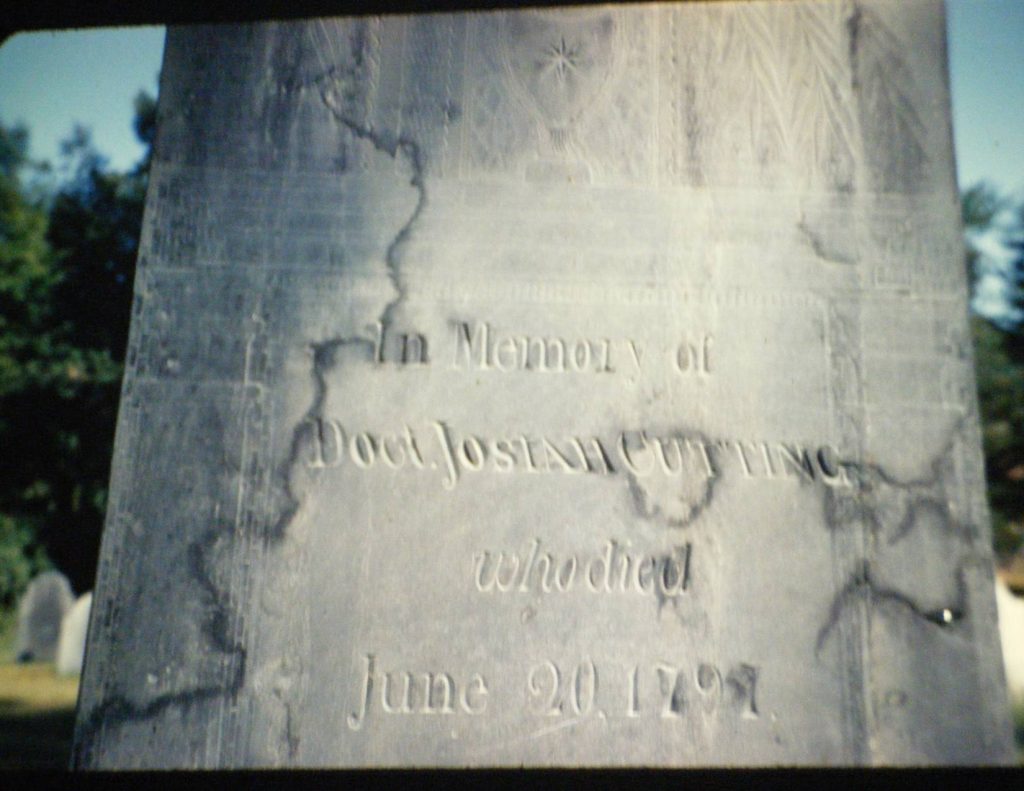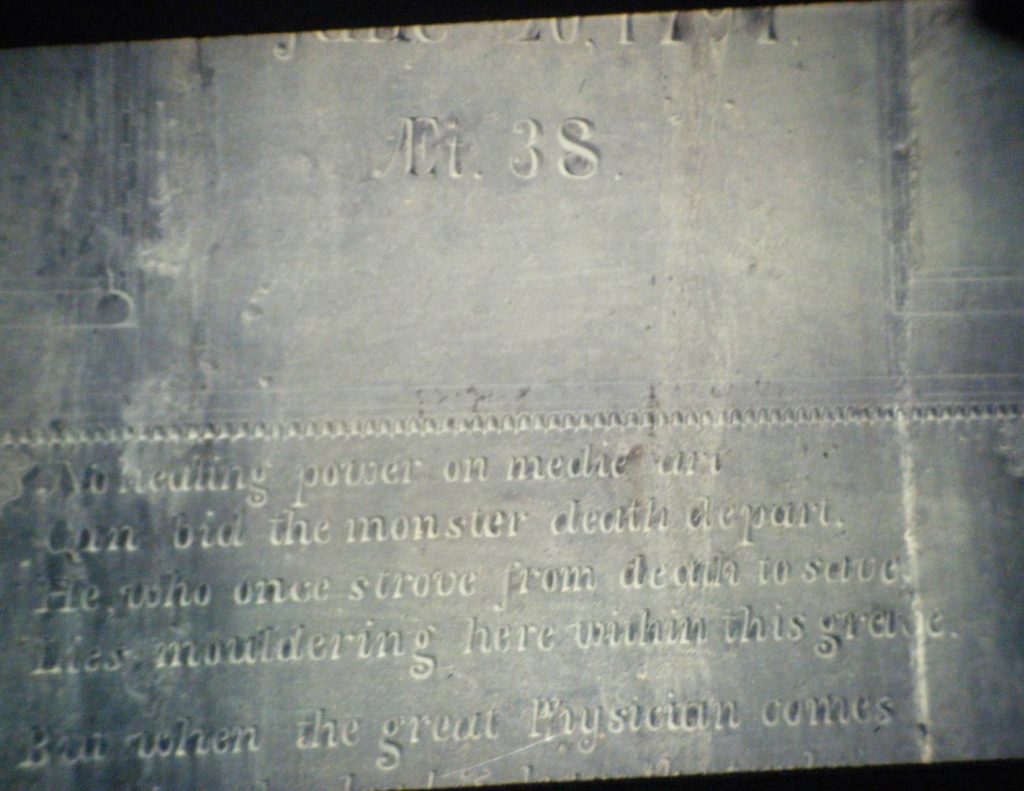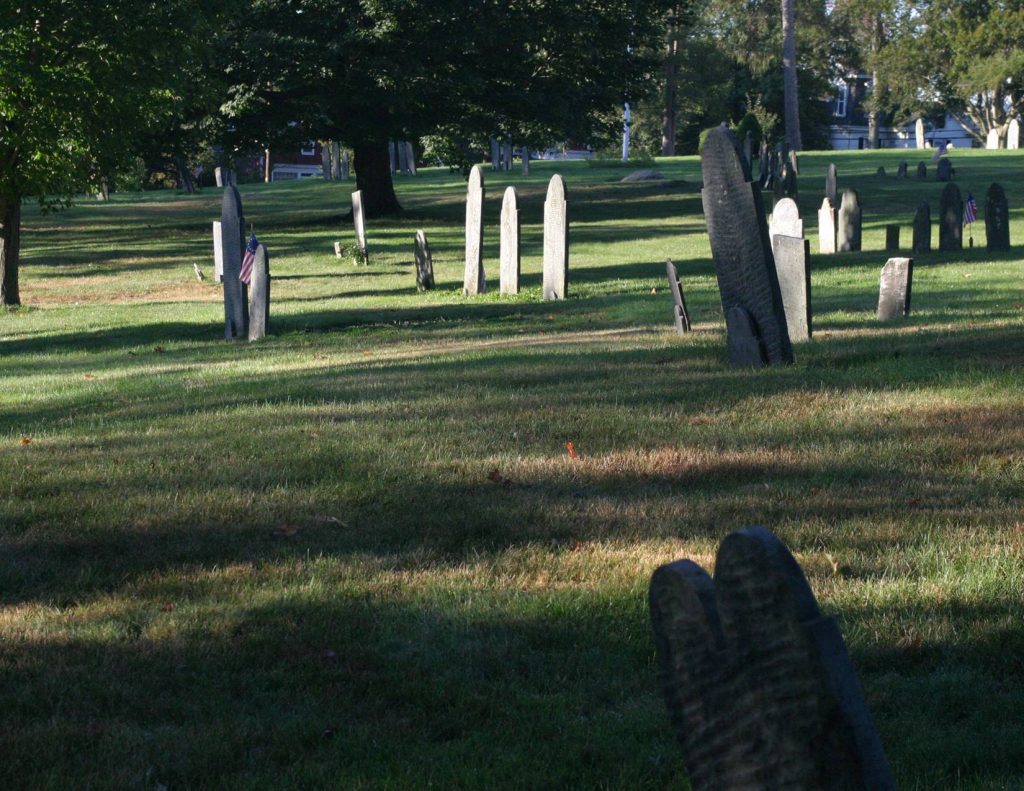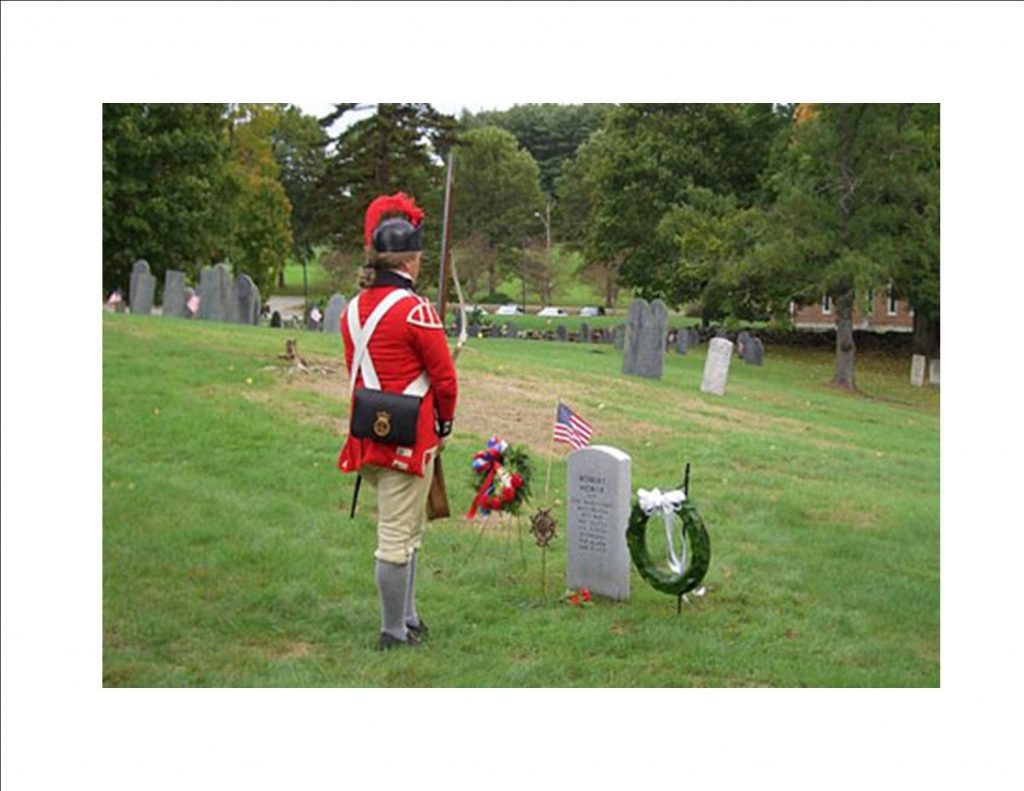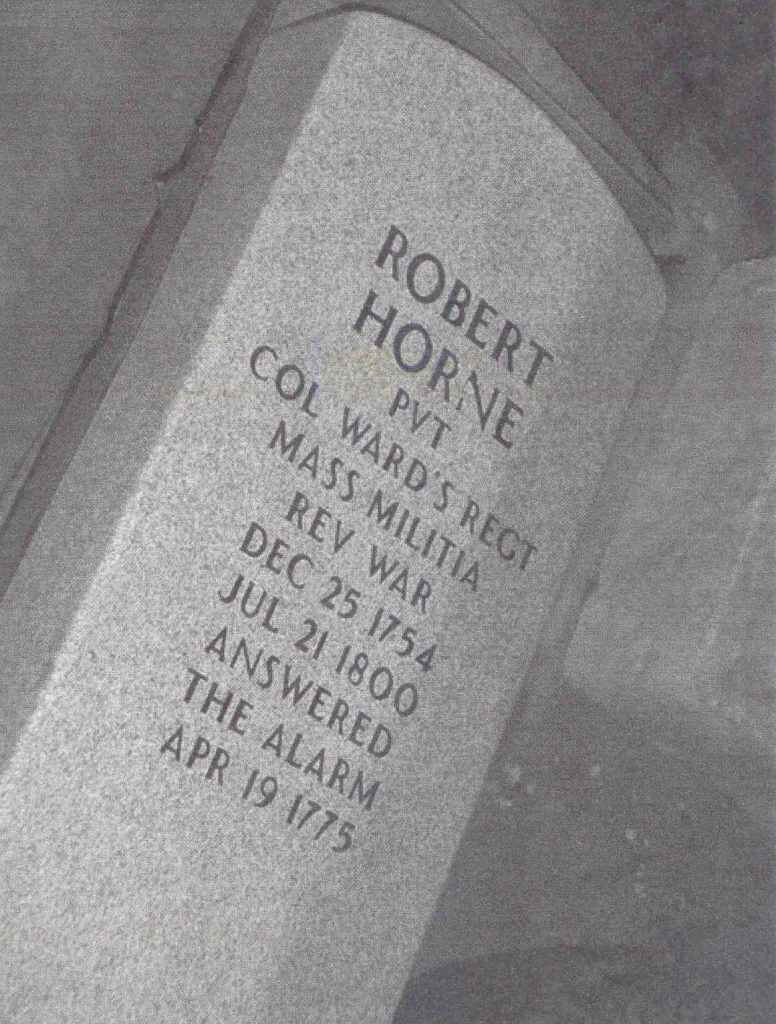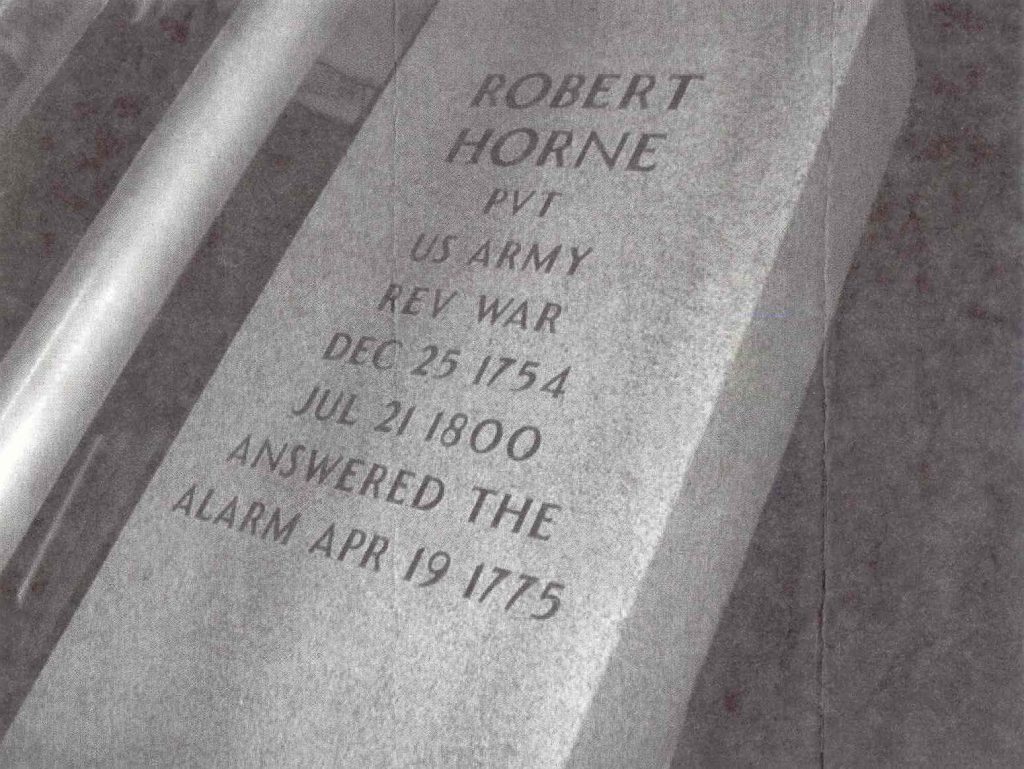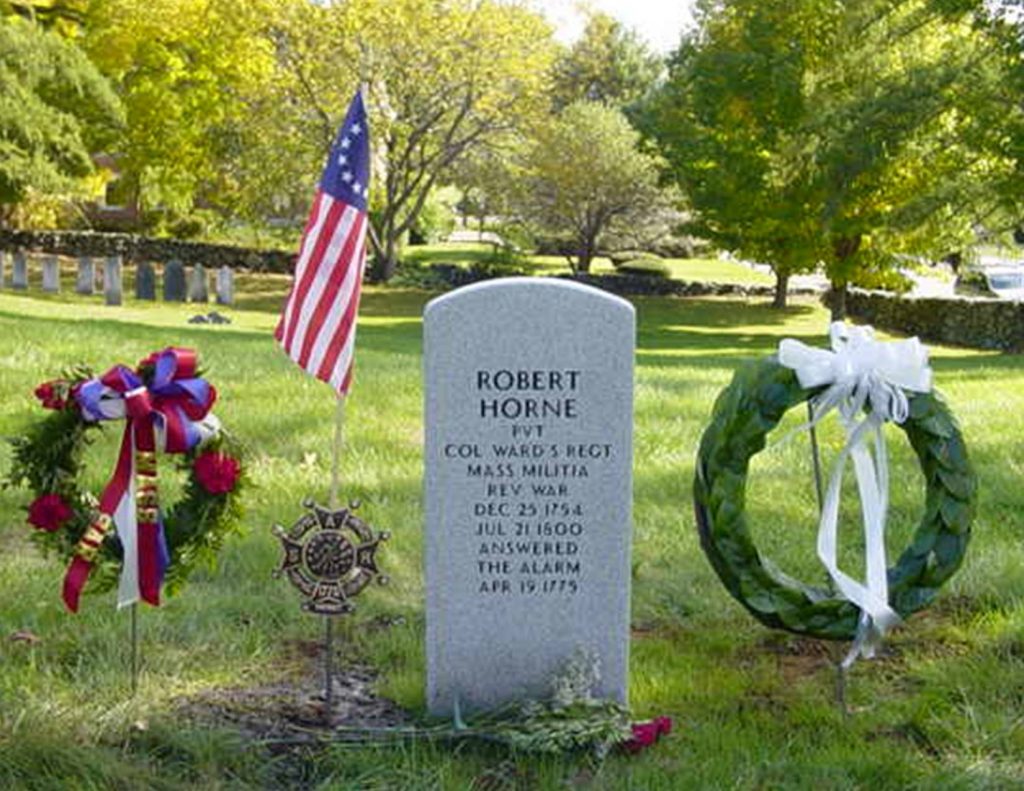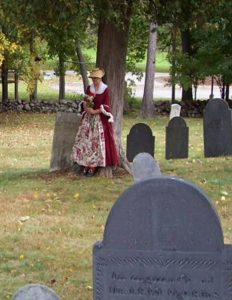
A Brief History of the Old Burial Ground
The First Town Meeting held Aug 28, 1727 was held in the house of Timothy Brigham, which stood on the Southeast Comer of the junction of Rte 85 & Rte. 30. The 7th article on the warrant was: “Then, proposed and voted that the place or piece of land next of the way west of Timothy Brigham’s house, formerly ruled and deeded in order for a burying place should be the burying place for our town in case it can be obtained”. This piece was “three acres granted and set apart for accommodation for a Meeting House, for a burying place and for a training field forever.” The survey of the parcel of land was accepted December 20, 1727.
The Burial Ground was used until 1842 when it was declared full and the newer Rural Cemetery on Rte. 85 a short distance south of the old Burial Ground was put into use. Some burial plots had been set aside for wives and children in the Old Burial Ground and the latest stone marker for burial in the OBG is marked 1895, grave #8 in Survey. Grave #35 dated 1730 is the earliest stone.
Possible earliest burial Margaret Newton, Nov. 7, 1728.
There 319 stones in the OBG accounting for 365 persons.
There are many blank spaces and probably many more graves are there having no markers. In the 1938 Hurricane many fine trees were uprooted, shattering stones as they fell. A search of the town records shows there were a total of 819 definite burials in the OBG and 307 more possible burials for a total of 1126.
More information on specific burials can be found HERE
This is a charming slide presentation put together by the late Kay Allen highlighting many of the stones in Southborough's Old Burial Ground
Early Town Meetings were held in the Meeting Houses, located as nearly as possible to the geographical center of the town, usually on a rise of ground. These meetings were held frequently and were all-day affairs which entire families attended.
2. It was natural then, that people would stroll tlrrough, or sit in the adjoining burial ground. One can almost see children playing tag among the stones and pausing to stare back at the stone skulls, or to read the words carved on the markers. Perhaps realizing an opportunity to teach these visitors views of religion and morality, appropriate verses were added to the stones along with the vital statistics of the person buried there. For example, our title is taken from a short verse which begins, "Behold and see, as you pass by, as you are now so once was I."
Although the next 3 slides are not the oldest in our Burial Ground, they are carved in a much earlier style, with a flat, linear death head of primitive style.
Typical too, are the six pointed rosettes and crude scrolls. Notice the depth of the eyes.
This carver did several stones, mostly for the Johnson's. Indeed, he may have been a Johnson himself, as the stone cutters had other occupations, carving a stone only when one was needed. So this man might have been a carpenter or a blacksmith or a shoemaker.
Here is the top of the earliest stone in the Burial ground. It is the marker for John Woods, who died in 1730 when he was 6 years old. The skull is quite hideous, a symbol of death obvious event of those unschooled to read the inscription carved underneath.
Here is another skull. Again frightening in appearance but softened just a
bit by the lovely carved flower. The symbol of the frailty of life, just above
the skull.
A winged skull with a small flower and scrolls. Notice the addition of lips above the teeth and the surprised, almost happy curve to the brows added above the eye sockets. The skull is becoming less frightening and more humanized.
Here is a skull, or is it a face with a sad mouth drawn down at the comers and wearing a collar of teeth?
Our first transition stone. Still linear in style, definitely not a skull. With staring eye sockets, but a winged angel with curly hair and full eyes. Notice that the carver misplaced the wings, which sprout from the angel's ears instead of its shoulders.
This is a cherub with natural looking hair and a somewhat severe Expression. You can see that the carving is becoming more three dimensional now, and the eyes more expressive.
Here is a charming cherub with a child's round head and large round eyes, carved by a very perceptive artist.
This angel, on the top of Reverend Nathan Stone's marker is obviously an older looking angel with a sadder look to the eyes and a neatly carved bang.
14. Older, and sadder. The hair is done in a very natural style
15. Here is a highly stylized angel, who is obviously bald. It's almost as if the carver were trying to depict a human face rather that of a typical angel.
This carver has left off the wings entirely and we have evolved to what is known as a "Soul Effigy" or portrait stone. I don't have to ask you to notice the bulging eyes,as they are very prominent. But the wig might have escaped your notice.
Here is the entire stone, slipped in at this point to show the carved grapevine vertical border on either side of the stone. The grapevine was a symbol for the church.
Here is our reluctant angel, wearing a lovely pageboy style wig.
And a smiling portrait. A so-called soul effigy wearing wings depicted the soul rising to heaven.
This portrait is crudely done, but the softly rounded cheeks and bouffant hair give it a very pleasant appearance.
No one could deny that this is the portrait of a man, who vaguely resembles John Wayne, in spite of his very crossede yes.
Next to this stone is this purse-mouthed lady with her jeweled necklace and scalloped collar.
There were some that preferred a decoration not quite so horrifying as a skull, such as this full-blown rose on Ann Eliza Loomis's stone. She was 16 when she died and surely a rose was more a fitting symbol of a young girl in the bloom of youth.
Here is a tree, symbol of life, with 2 huge flowers on it, symbols of the frailty of life.
Lieutenant and Mrs. Smith preferred a leafy scroll, perhaps the palm of victory, for their 5-year-old son's grave.
And a stylized scroll and leaf decoration for their 2 year old daughter.
Here is a very simple stone with a scroll top.
Another, badly damaged with a slightly more elaborate scroll.
29. If you take the tour through the Burial Ground you will see several of these markers erected by the Sons of the American Revolution at the graves of veterans of the Colonial and Revolutionary wars and the War of 1812.
There are many markers similar to this one of a willow tree and urn. This is a machine cut stone and though very beautifully done, it lacks the spontaneity and vigor of the earlier stones.
This double stone marks the burial place of the twin daughters of Mr. and Mrs. Amsden. Catherine was married to Solomon Este. A prominent Southborough man.
And her side of the stone is marked with a willow and an urn bearing her initials C.E.
Anna was the wife of Sylvester Jennison. These 2 young women both died when they were 24 years old.
These 2 brothers died 11 days apart.
From another double stone, Hiram Augustus Mixer who died Sept. 11, 1832
and his brother Rufus Franklin Mixer who died March 31, 18?
This stone is for two Wheeler children, a girl Ann Eliza
And a boy Henery Sumner. This is not necessarily a spelling error. There are several Henery's in the Southborough Vital Records. In fact, spelling was quite casual in those days, as you will see shortly.
This stone,f or Mrs. Mary Champney is unusual in two respects. First, it tells us that she was from Pomfret Street, Connecticut. At least that is what the stone says. Perhaps she was from Pomfret, State of Connecticut. Then, on the lower part of this stone are the words, 'Also four of their children lies near.
And so you know where they lie, there is a little carved hand with a pointing finger.
We have one other such hand. Pointing to dear father. Unfortunately, the carver pointed the hand the wrong way! So this stone was set up backwards so that the hand pointed in the correct direction.
This unusual stone reads 'erected by J.G. Bannister in memory of his Father, mother, sister and brother. Period.
There seems to be lots of unused space in the old Burial Ground. Actually it is filled to the walls with a possible total of over 1100 burials. There presently stands 320 stones marking the burial places of 365 people. Some families couldn't afford stones, some people had no one left behind to
erect a stone to their memory. Time has destroyed many stones and a great many were shattered by the Hurricane of 1938.
This is really a Pity. For we do not know the actual burial place of some remarkable people. For instance, Mr. James Williams, who weighed in excess of 430 pounds at the time of his death and whose coffin was 2 feet deep and 3 feet wide.
And the widow Taylor who died in 1801, aged 84. She left 12 children, 67 grand children, 96 great grand children and 10 great, great grand children! One of her daughters out did her. She had 13 children. Incidentally, the comer of the burial ground shown at the point of the arrow-shaped shadow is thought by some to be the burial spot for some Native Americans who died of a plague.
This is our earliest stone, dated 1730, the top of which you have already seen. This stone is in superb condition. Remember it has been out in the weather for nearly 300 years. Although it is our earliest stone, the first recorded burial was in 1728. The rural cemetery opened in 1842 and the last burial in the old burial ground was in 1895.
In contrast, this stone, located directly inside the burial ground wall, is dated 1850. It is dedicated to Rev. Jeroboam Parker and it has his church history inscribed on the marker. However, it is rough and difficult to read. Notice the hourglass with wings, signifying how time flies.
Betty Hastings Bellows stone is very much the worse for wear, but still legible after being there since 1775.
In contrast, Nathan Brittan's stone is so worn that it can be read only at I night using strong side lighting.
Widow Rachel Johnson's stone really isn't here at all. What you see is her foot stone. To facilitate mowing, the remaining footstones have been moved directly behind their corresponding headstones.
53. Meriam Fisk's footstone has more embellishment hen most.
Her is the face of her stone with flowers, scrolls and a fine skull wearing a toupee.
The Willis Newton stone was broken, probably shortly after it was set in place, hence the splice.
On the back seems to have suffered the same amount of weather erosion.
Thomas Brigham is slowly settling out of sight.
When this stone was set in place, an allowance was made for settling, and the stone obstinately didn't settle. The dark area wet with water for the photo has been left rough
Here is a close up of the rough area. There is a dividing line exactly
where the watermark stops. Directly below that can be seen a line of practice C's done by the stonecutter. And what appears to be a price of 14 shillings two pence, toward the right
Levi Works an ancestor of a Marlboro family, has a stone of perfect slate, unusually thick.
Here is a side view showing the stone of unusual thickness next to it, for contrast.
Reverend Stone was the first Minister in Southborough and his marker gives his life story. His family is buried beside him. This stone is badly chipped or pitted, but entirely readable.
This is Mrs. Chamberlain's Stone. The artist that cut this stone apparently "erased" an error. Look carefully at the capital "L" in Lemuel and you will see that a neat rectangle of slate was fitted in place on the stone. There is another mend between next E and the M.
This is Lemuel Chamberlains stone. The Chamberlains had bad luck with their stones it seems.
As the stonecutter misjudged his space and had to fudge as little bit.
66. Mrs. Ruth Chamberlain didn't fare too well either, her name is hyphenated.
Here is another example of not planning ahead from the stone you saw earlier, honoring the twin sisters.
Here is another example of not planning ahead from the stone you saw earlier, honoring the twin sisters.
Looks like the Wards liked this stone cutter even if he couldn't spell.
70. Here is daftr again and he left out Mr. So he added it above the word Charles which he managed to misspell. This is one of two stones mentioning adoption in our burial ground. Note the unusual symbol for and.
You remember the angel with the feathers in its ears? The rest of the stone is worthy of note too. It reads "This stone was setup by Mr. Othniel Taylor in memory of his sister Elizabeth the wife of Nathaniel Joslen.
Here is Martha. We don't know her last name as surrounding stones that might have given us a clue are gone. She was a child. As the verse reads" My lovely child-around thy tomb-may sweetest flowers forever bloom-and while in dust thy body lies- thy soul is blooming in the skies-v-.
Mrs. Fays stone contains more about her illustrious husband, leader of the Minutemen and militia then about herself even though she did live over 95 years.
Stephen Parker was accidentally killed by a musket while attending a turkey shoot. The verse, especially written begins "The hopes inspired by morning light, are often e' er tis night."
This is a good example of the old way of writing an "S", it looks like an "F" with the right side of the cross bar left off. The name actually is Asa.
Here is an interesting stone, Dedicated to Peter Clark, notice the bald angel and urns on top. This stone gives Mr. Clark's career in detail with the I date spelled out. . .
... complete with those funny S's. Until you get to the last date which is done in numerals. There is a double error in the first line of this verse, which is difficult to read. But by the time the carver reached the bottom of the I stone, it was too late to start over.
Dr. Cutting's stone has unusual back-hand lettering and a taylor made verse ...
"No healing power or medic art can bid the monster death depart, He
who once strove from death to save lies moldering here within this grave."
There is a typical verse which reads " Remember me as you pass by, as you are now, so once was I. As I am now, so you must be, prepare for death and follow me." This was amended recently by a note, which read "To follow you is not my intent, until I know which way you went".
If you think that mistakes about grave markers is a thing of the past, think again. In the year 2006, Russell Home, submitted an application to the government for a stone to mark the grave of a veteran where none was present. Plans had been made for a grave marking ceremony to be attended by members of the Sons of the American Revolution, Southborough Company of Militia and Min¬utemen, the Kings Own 10th Regiment of Foot (British) and honored guests. Weeks later at the cemetery the stone arrived broken in half. .
A second marker was ordered and it arrived with chipped lettering
A third arrived with our veteran who served in the Revolutionary War
listed as a Private in the "US Army", before there was a United States.
And finally after four stone markers, all was right.
